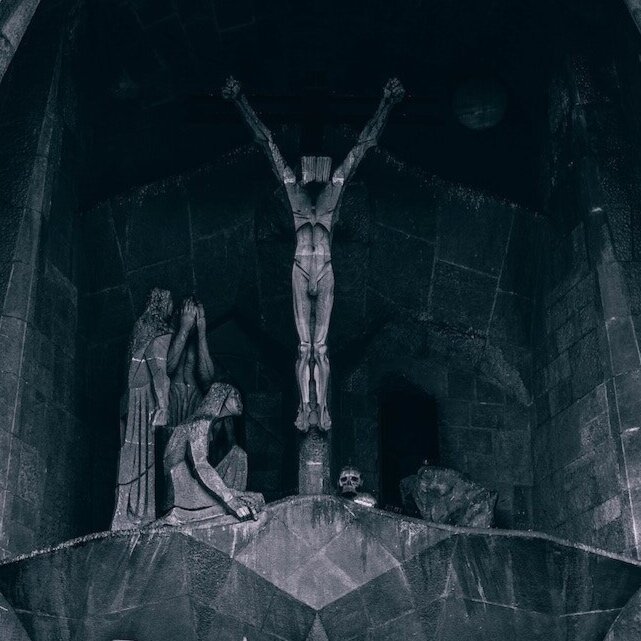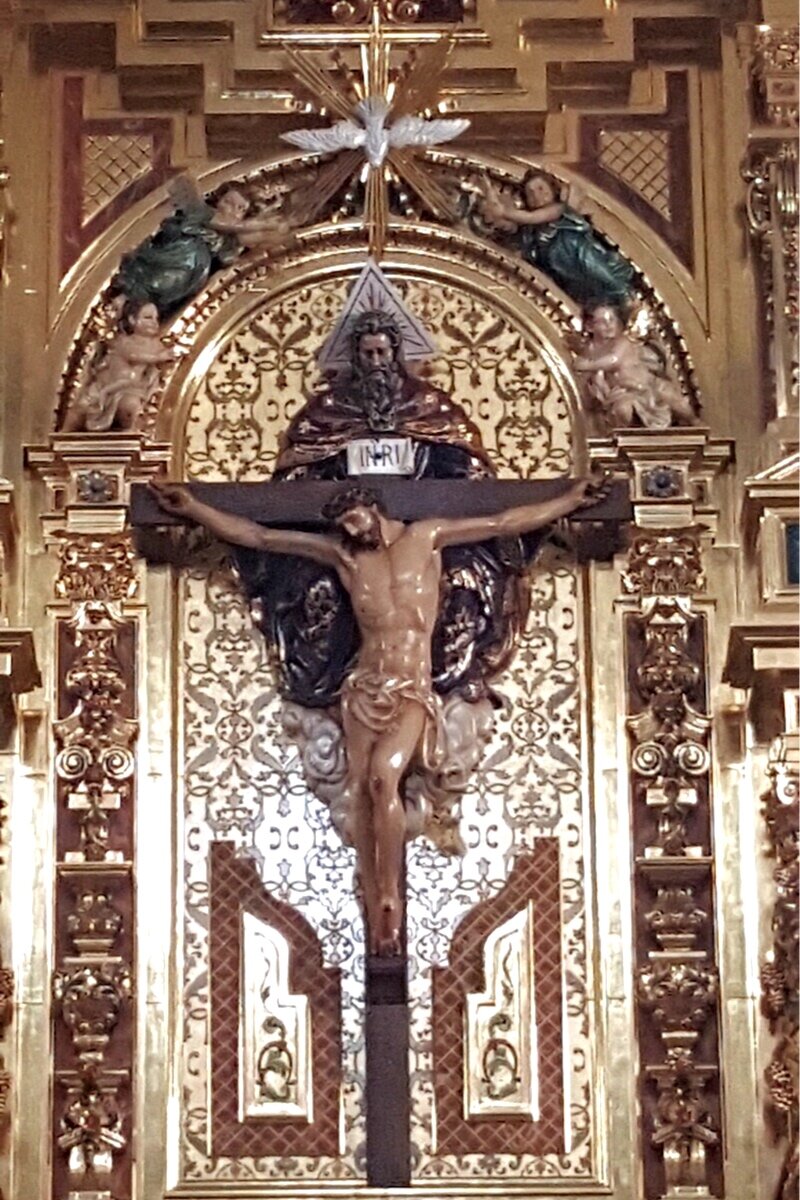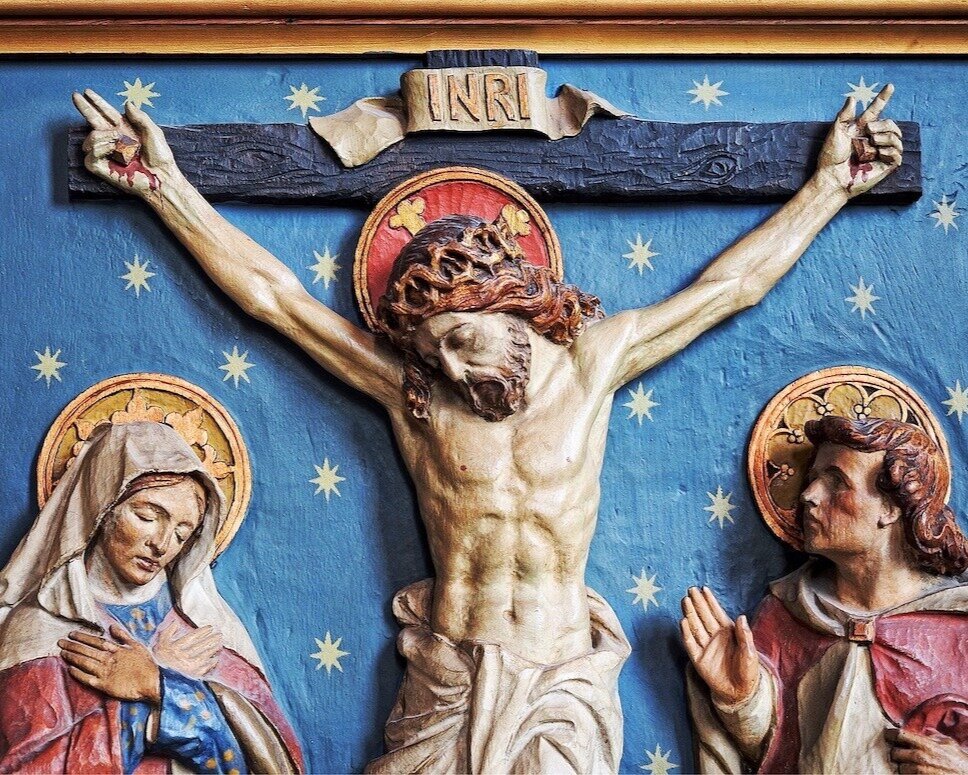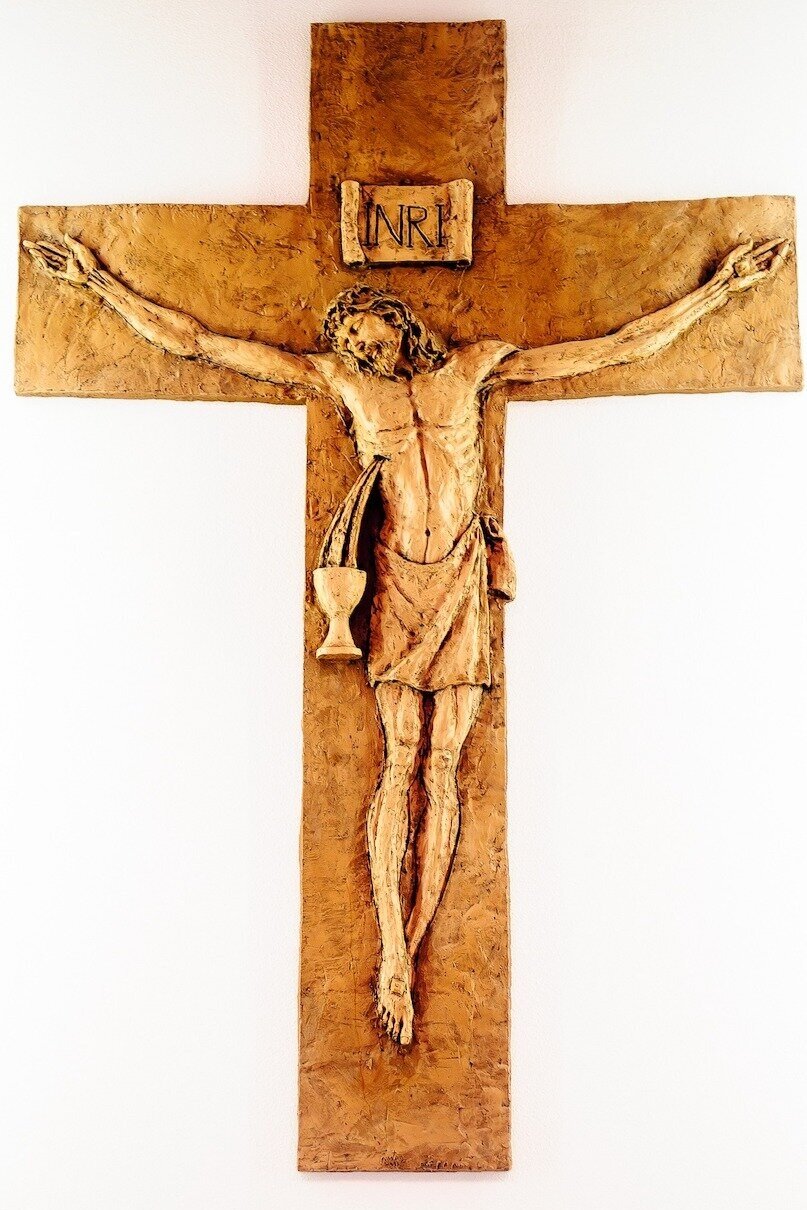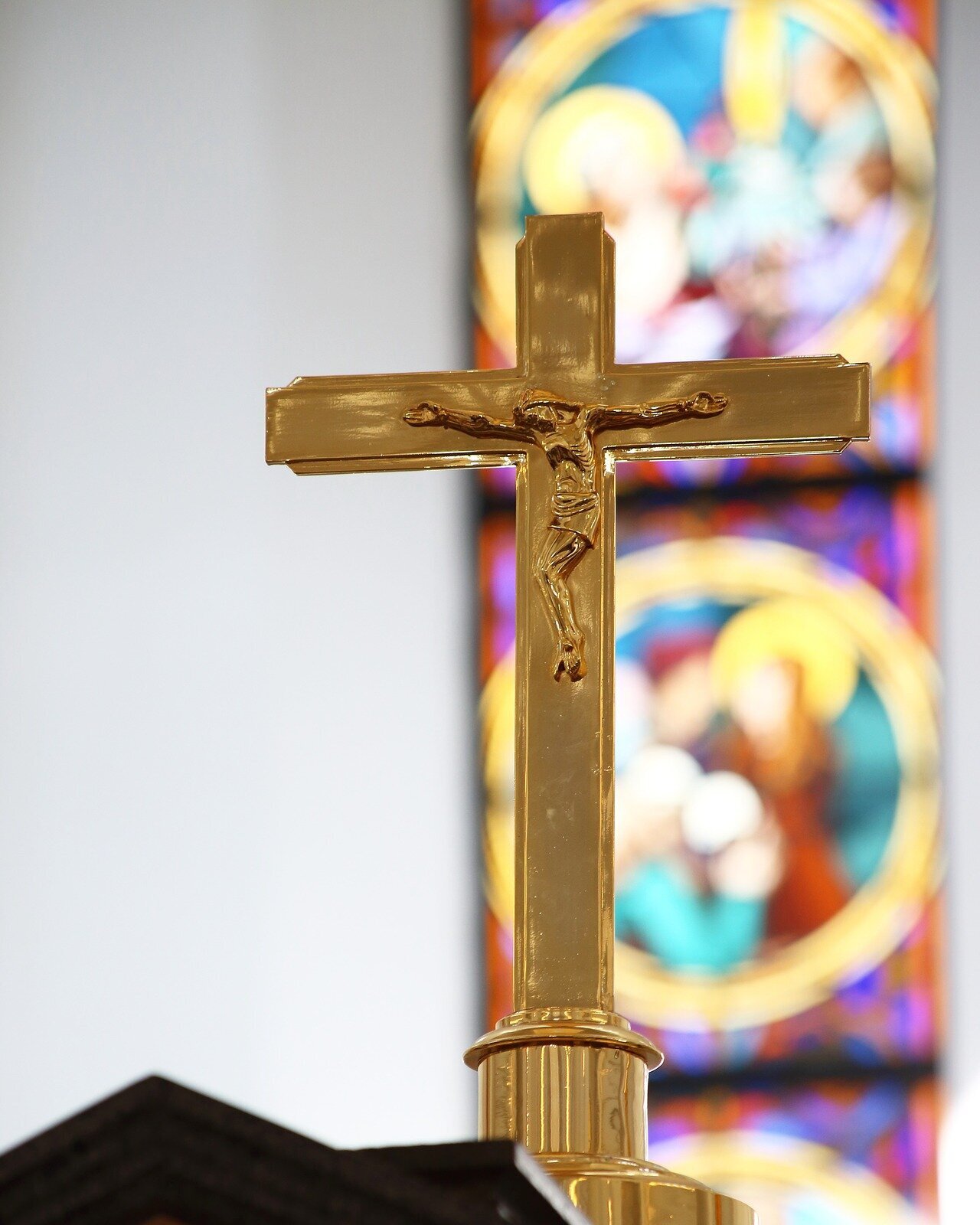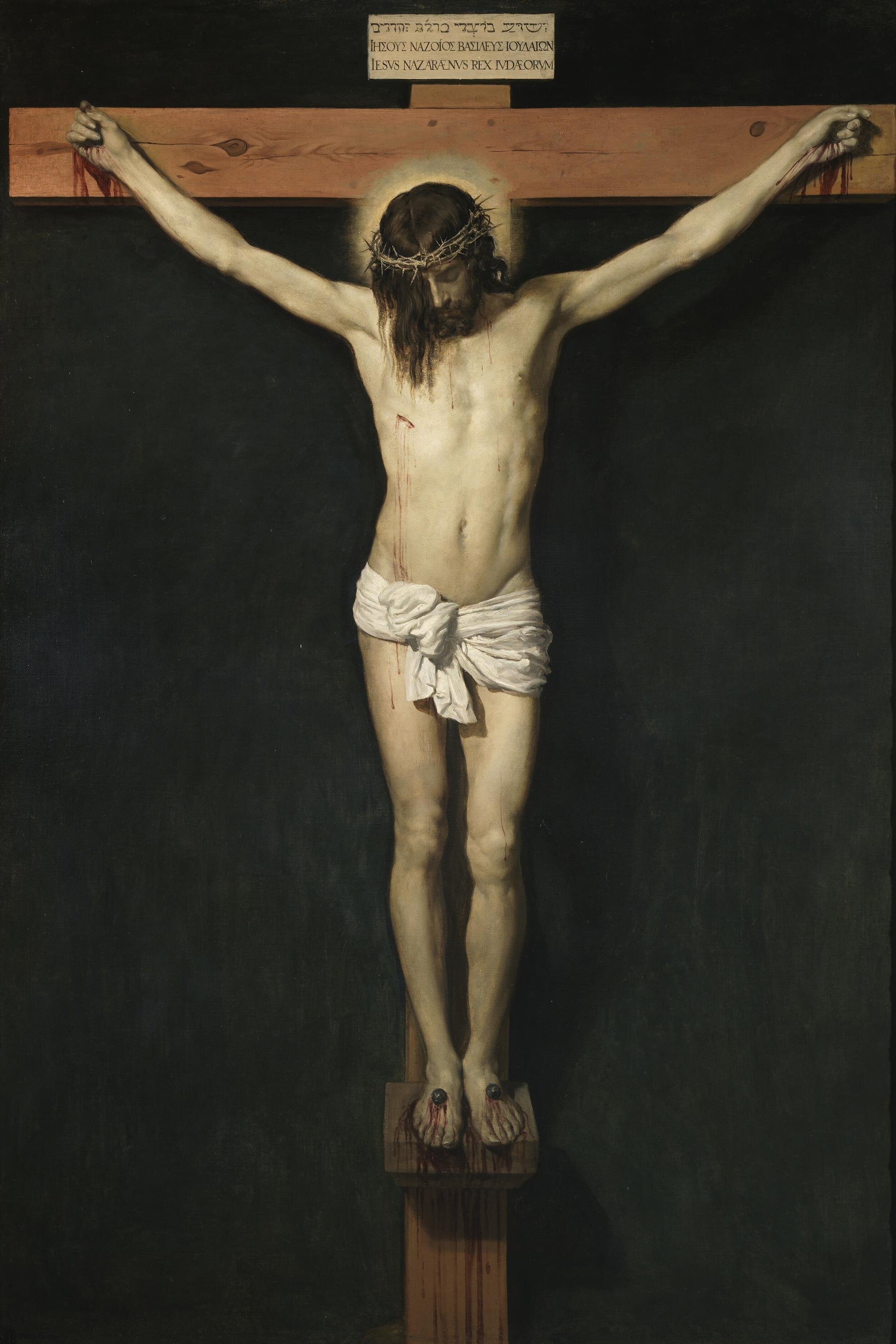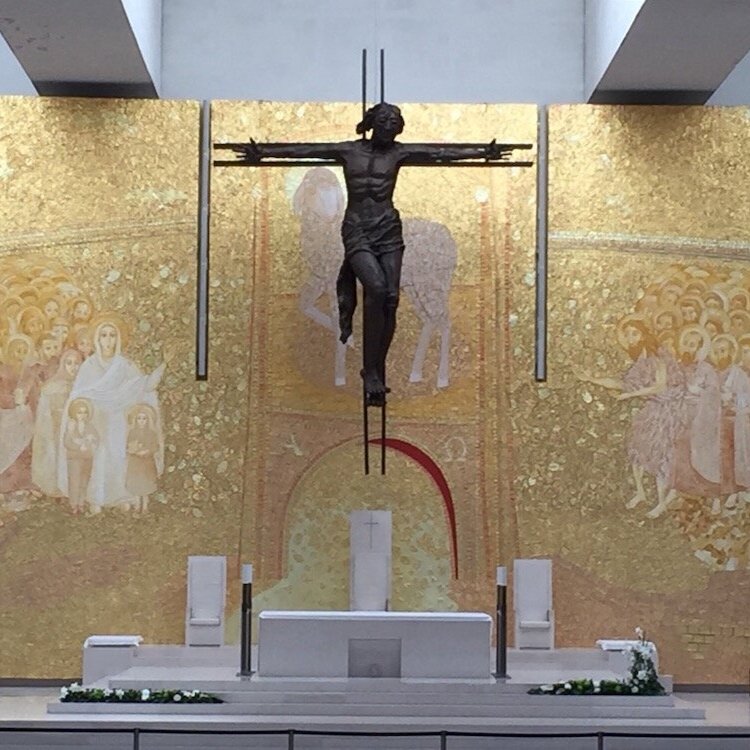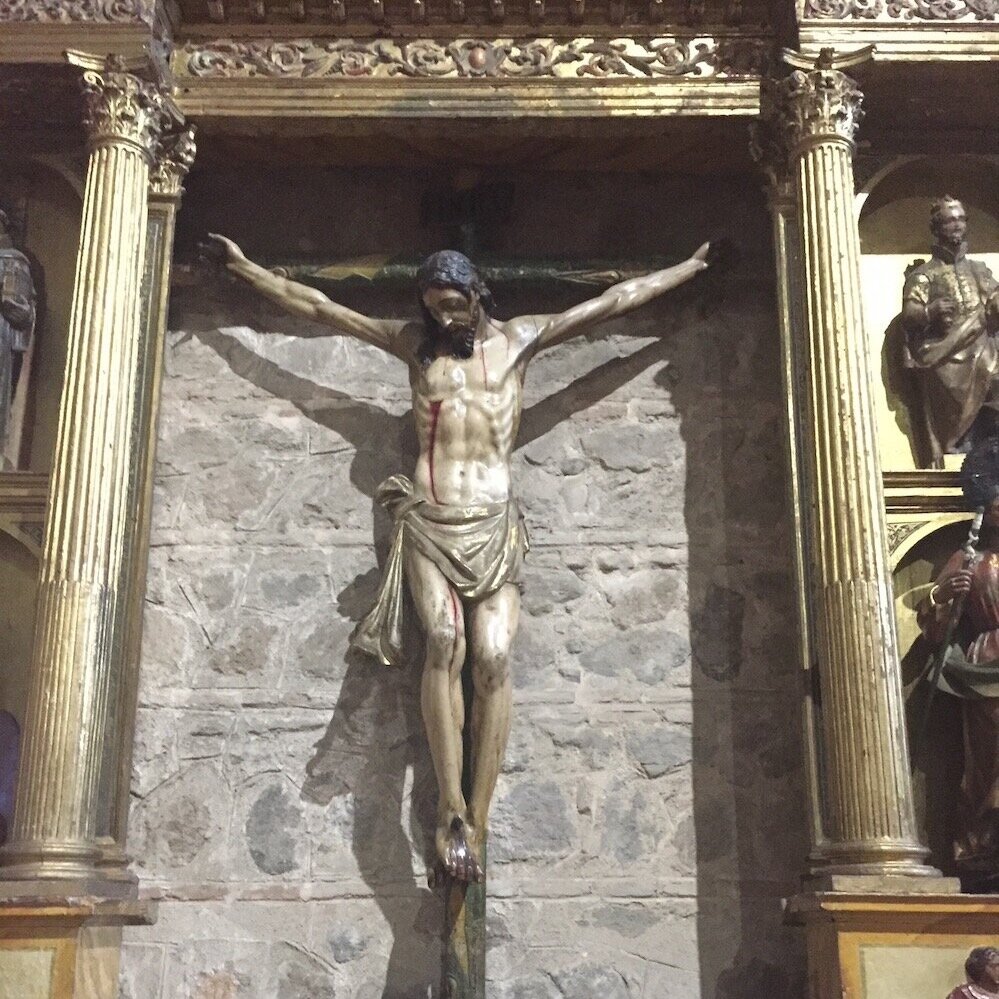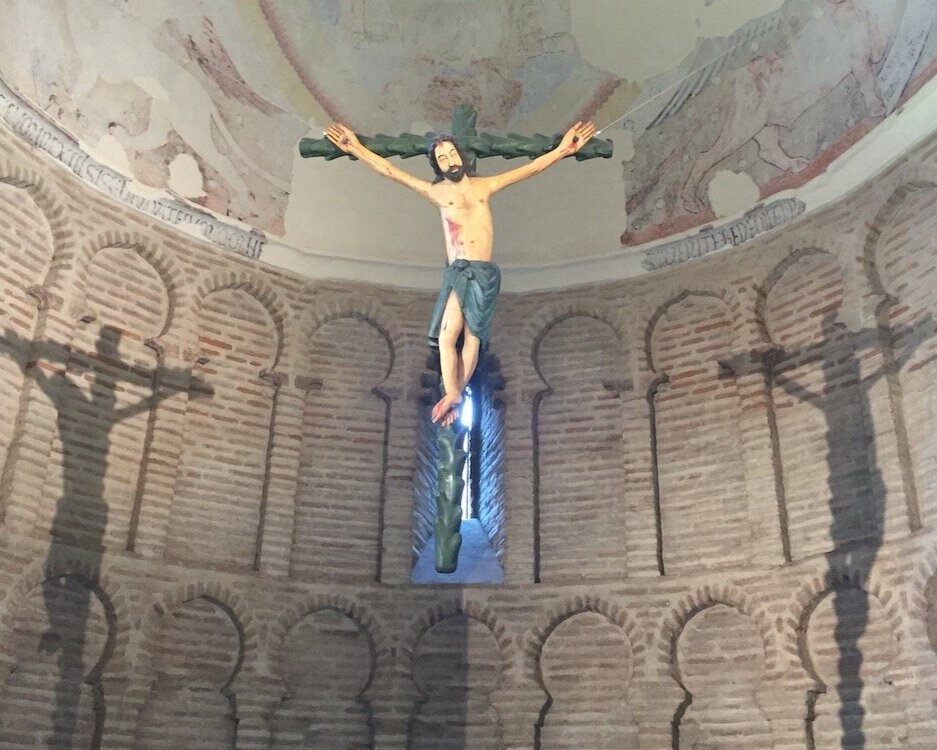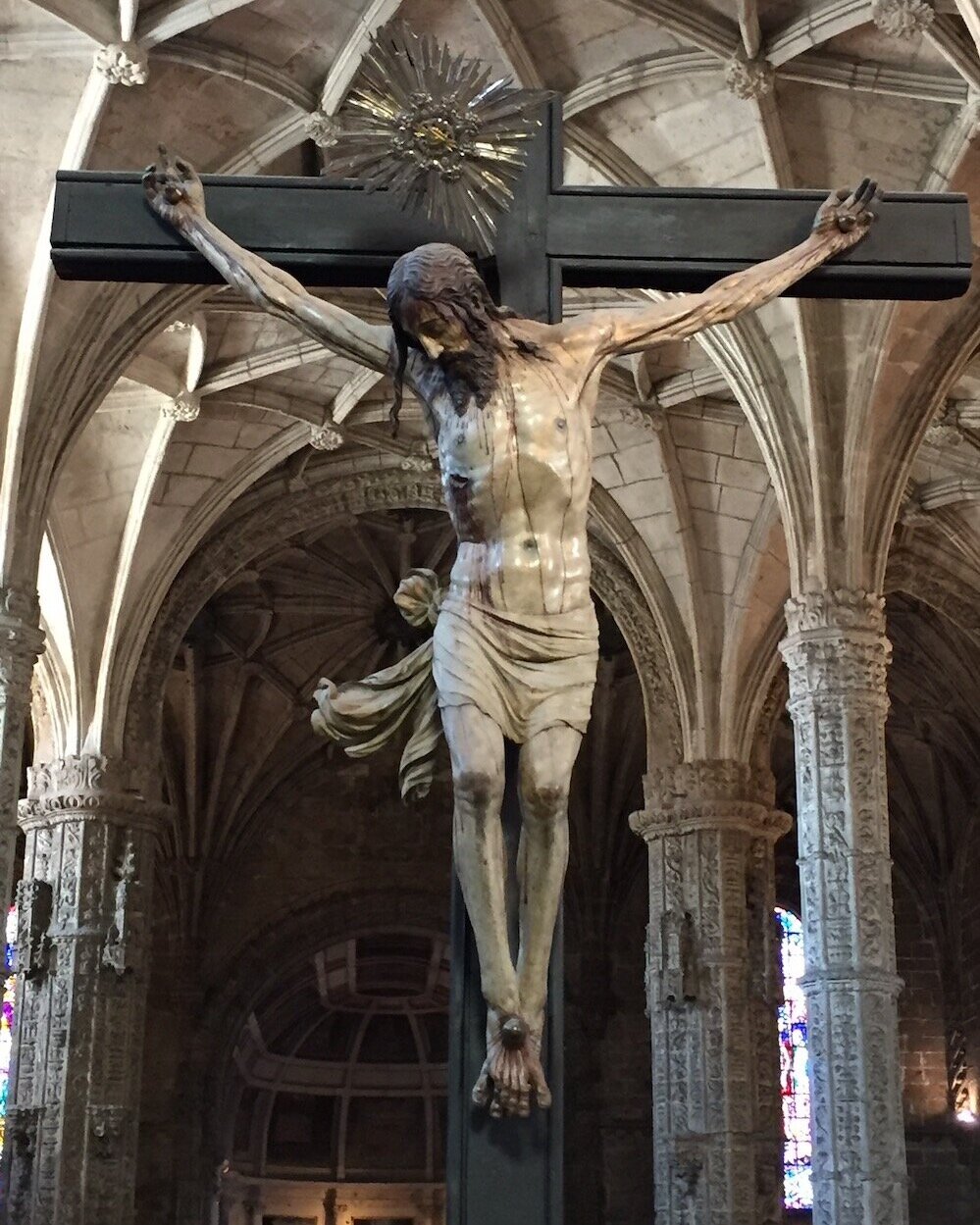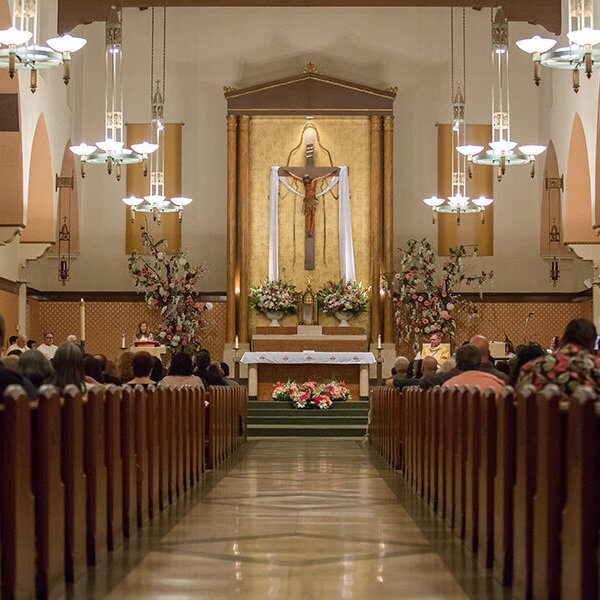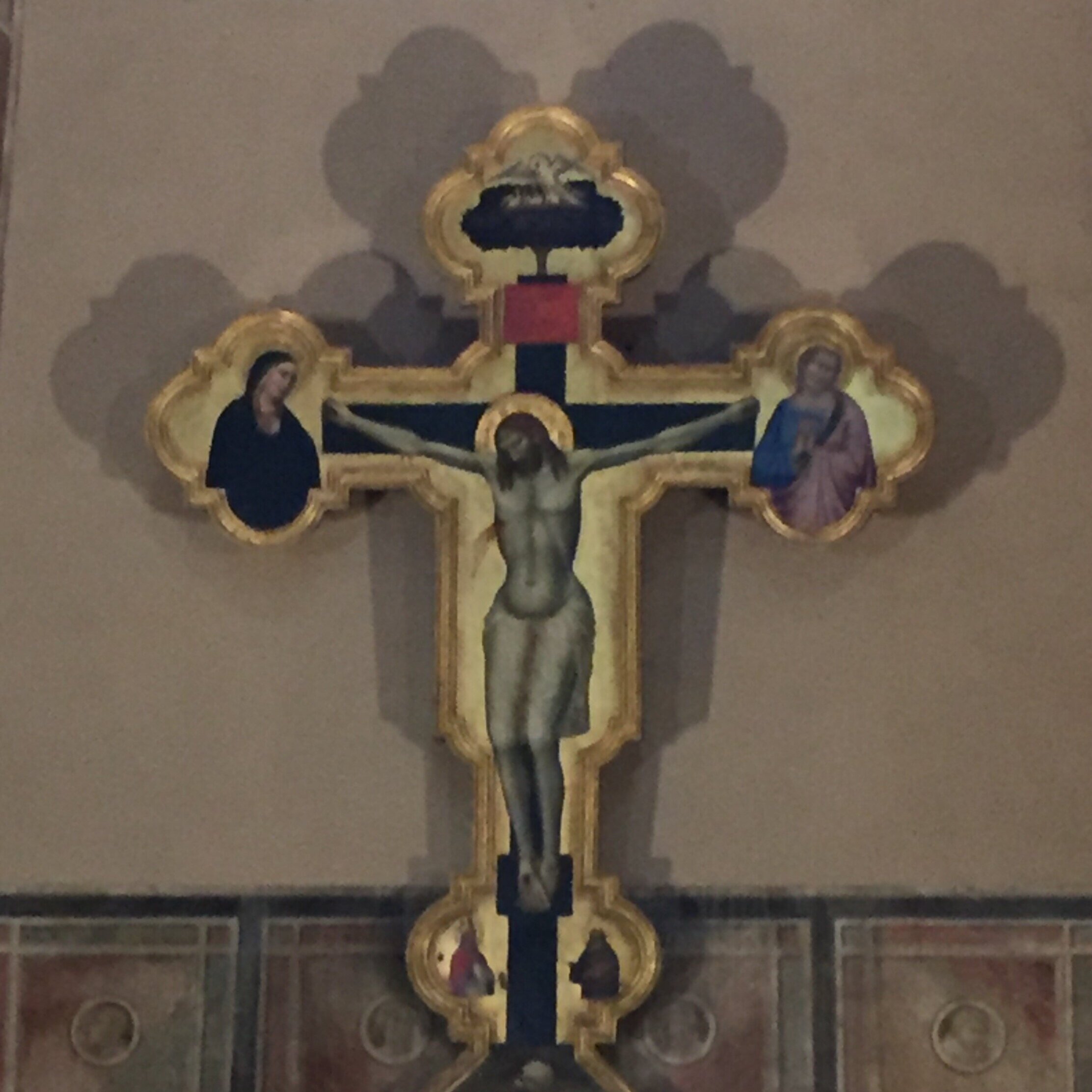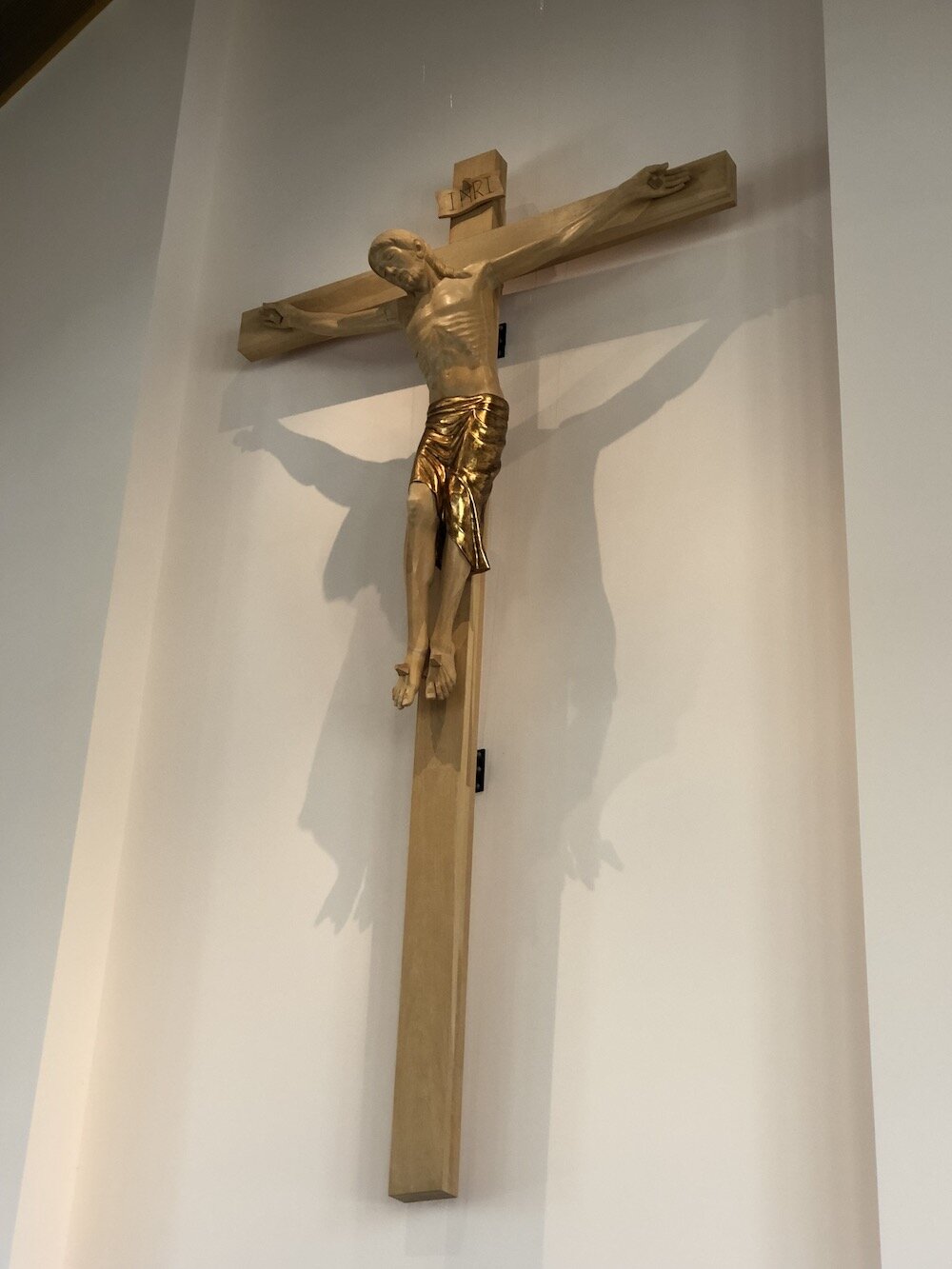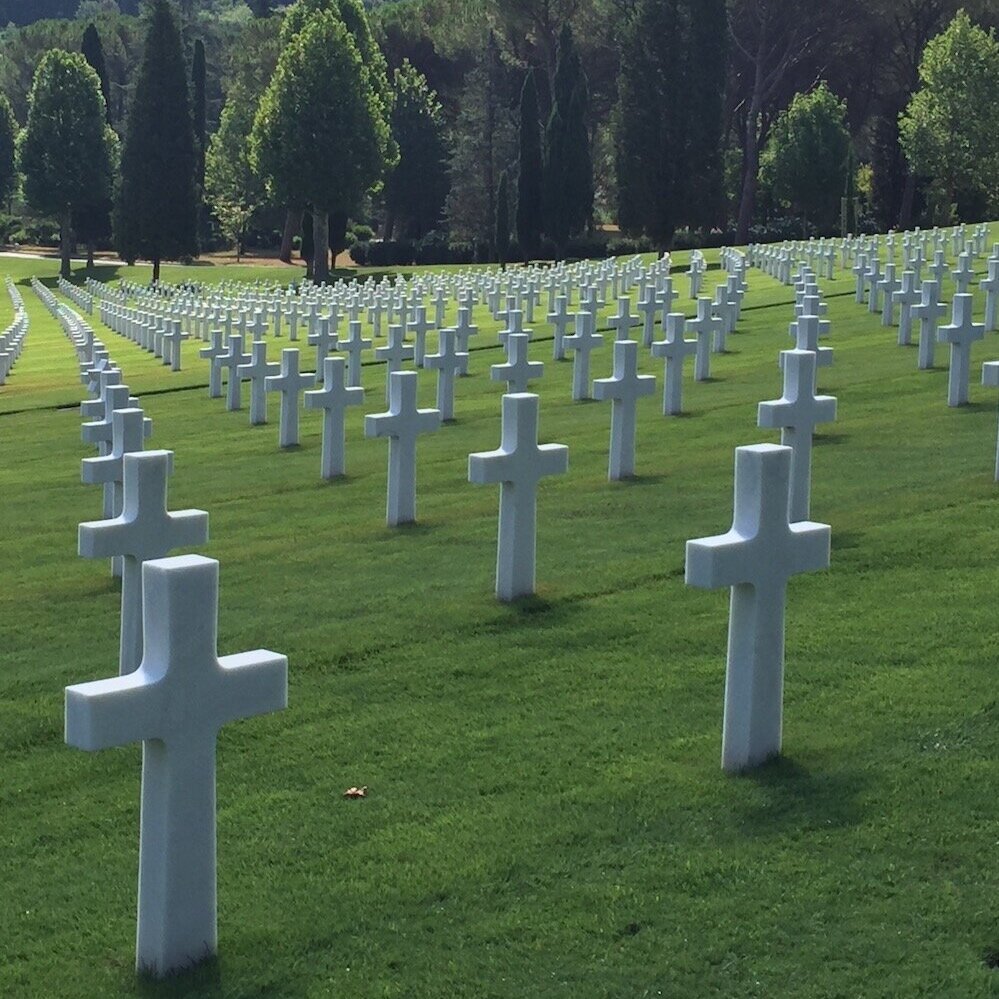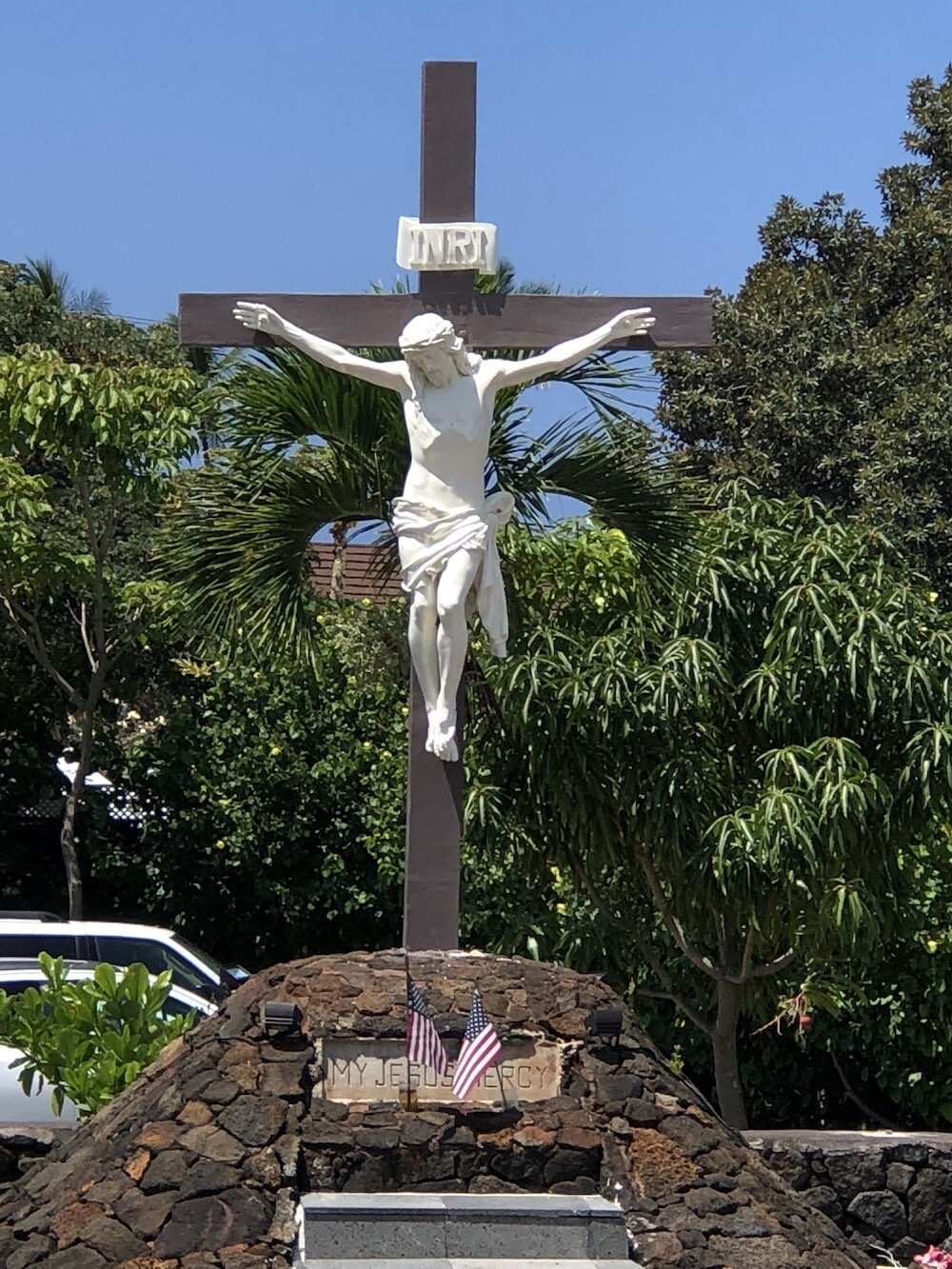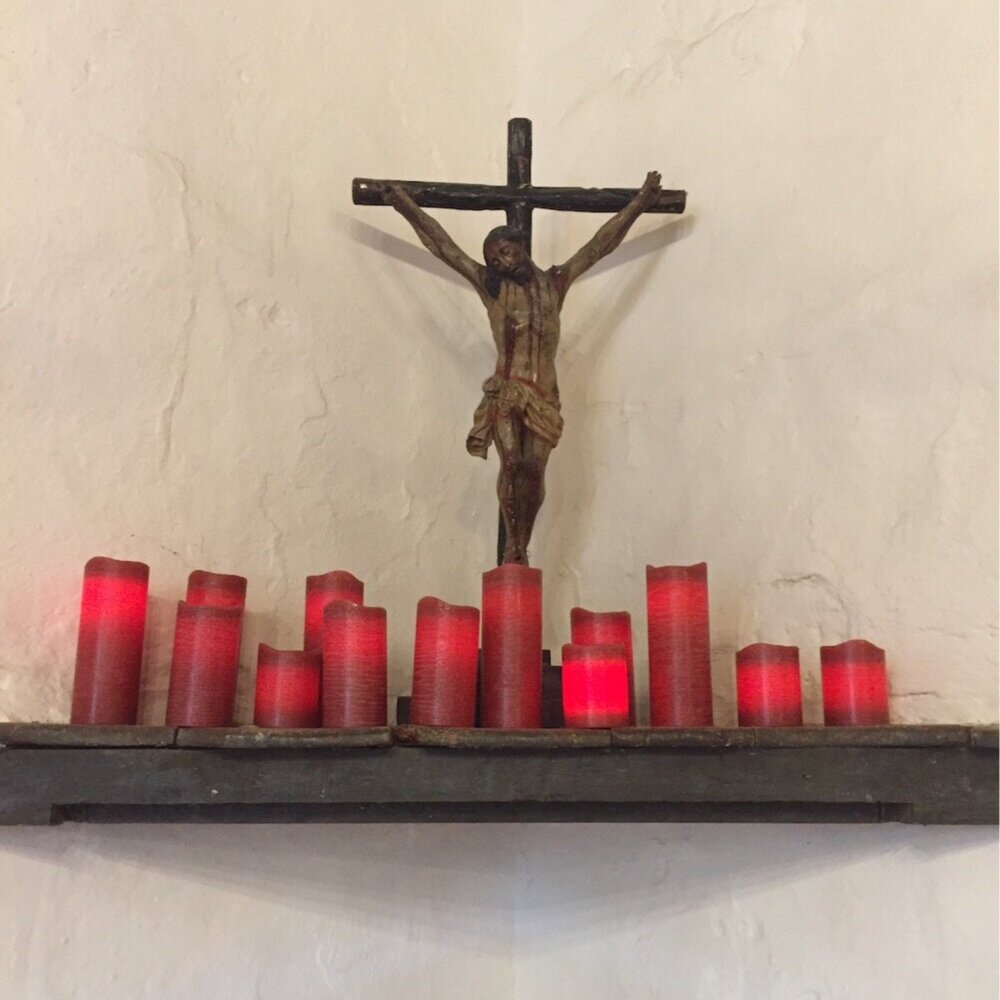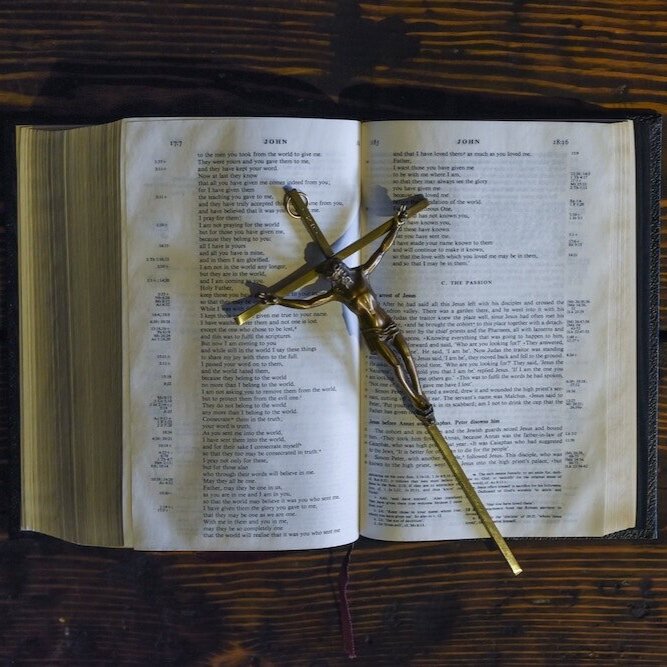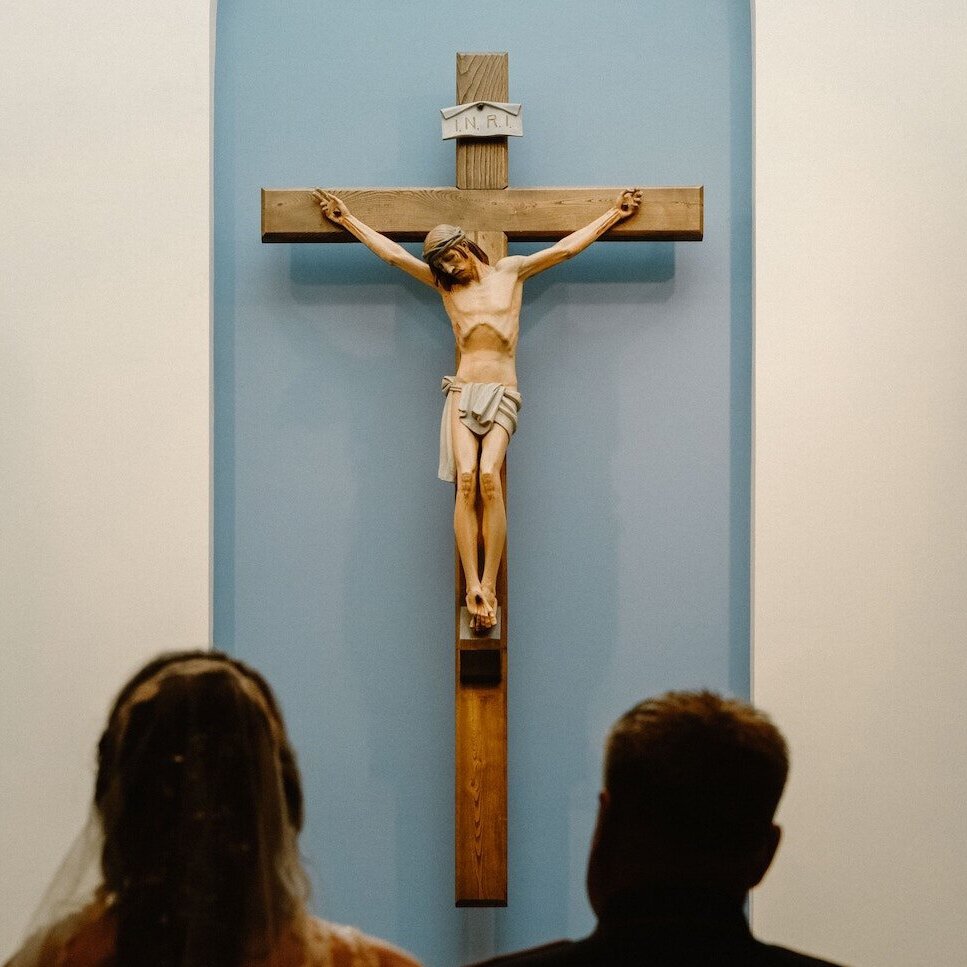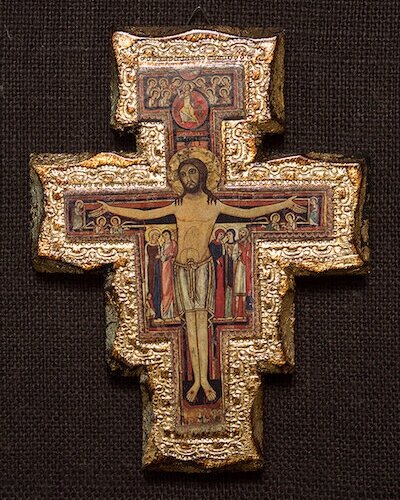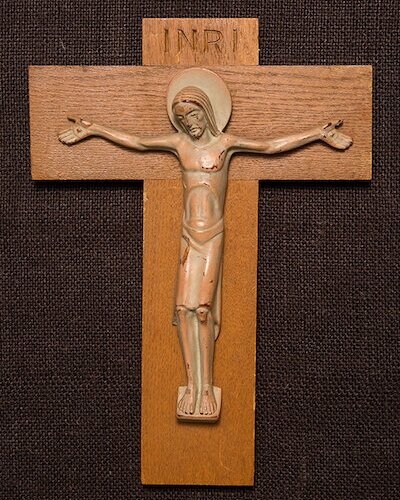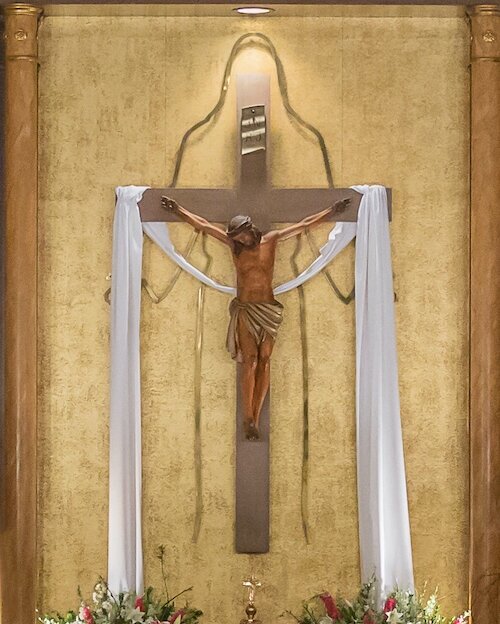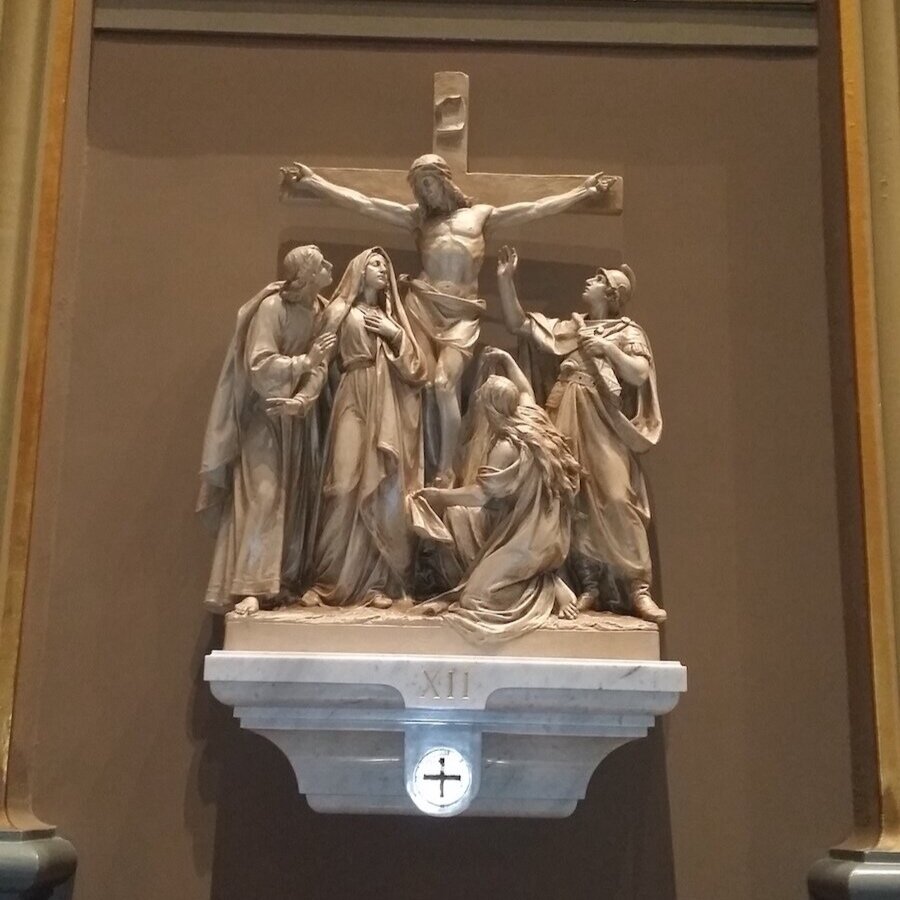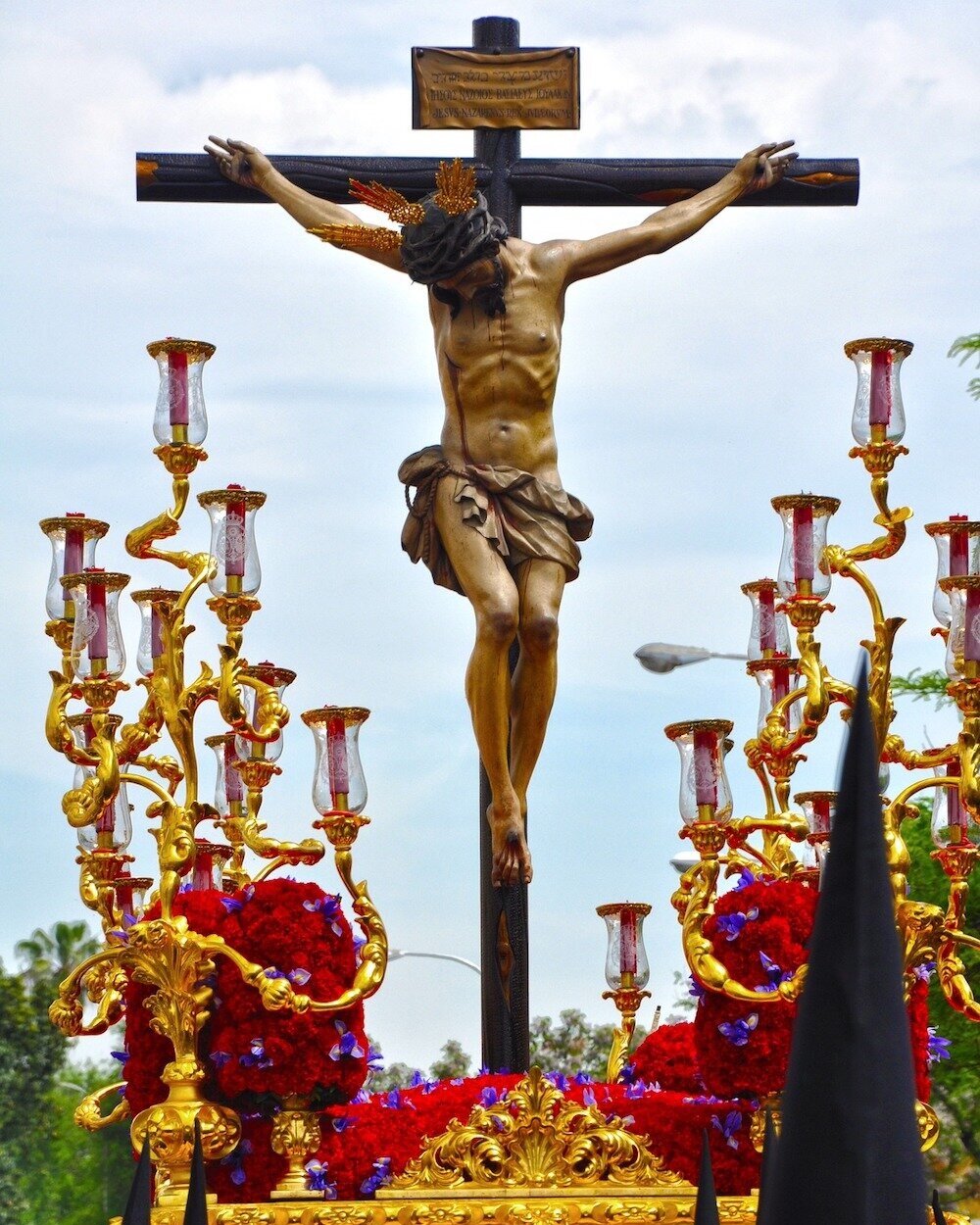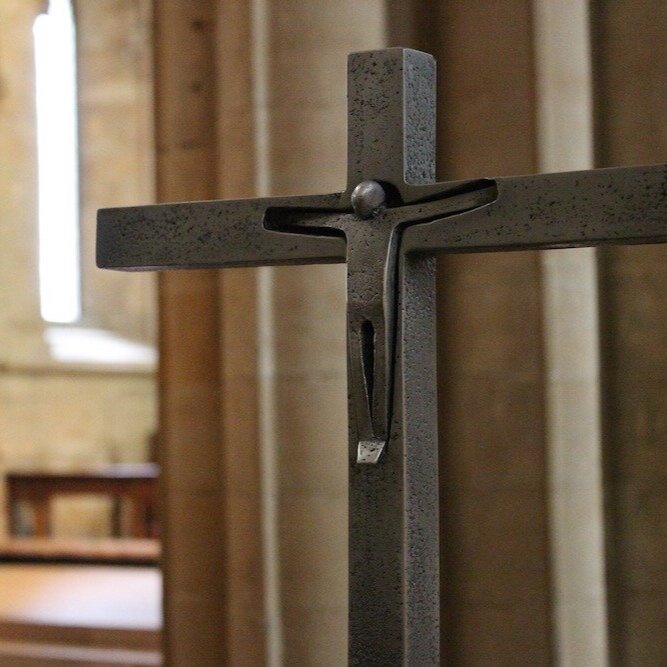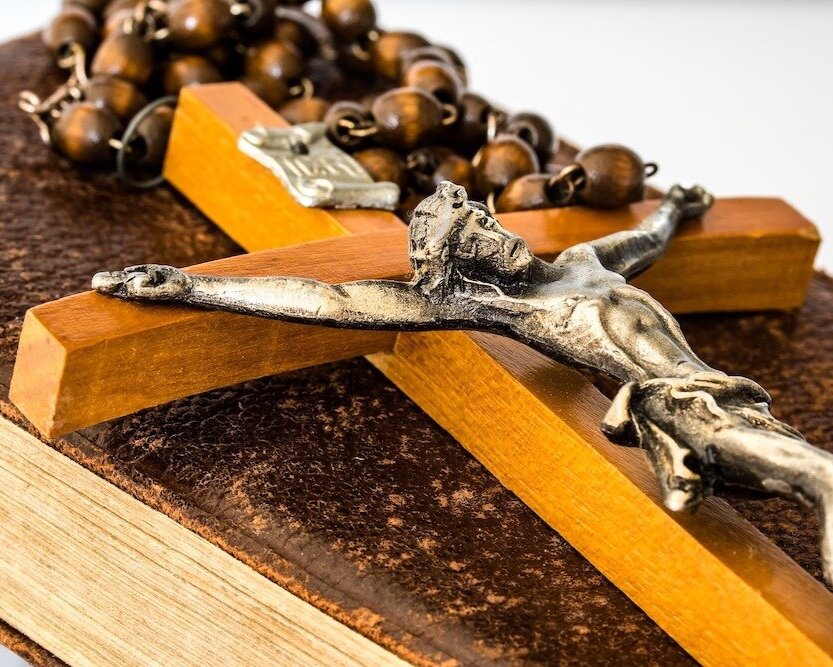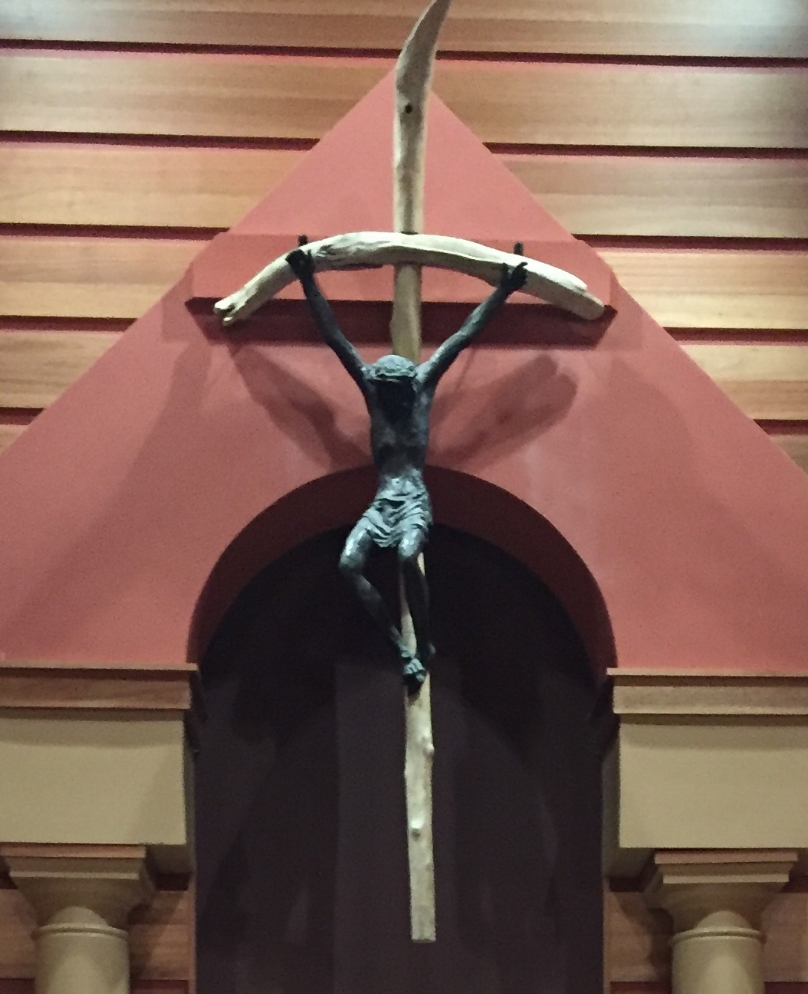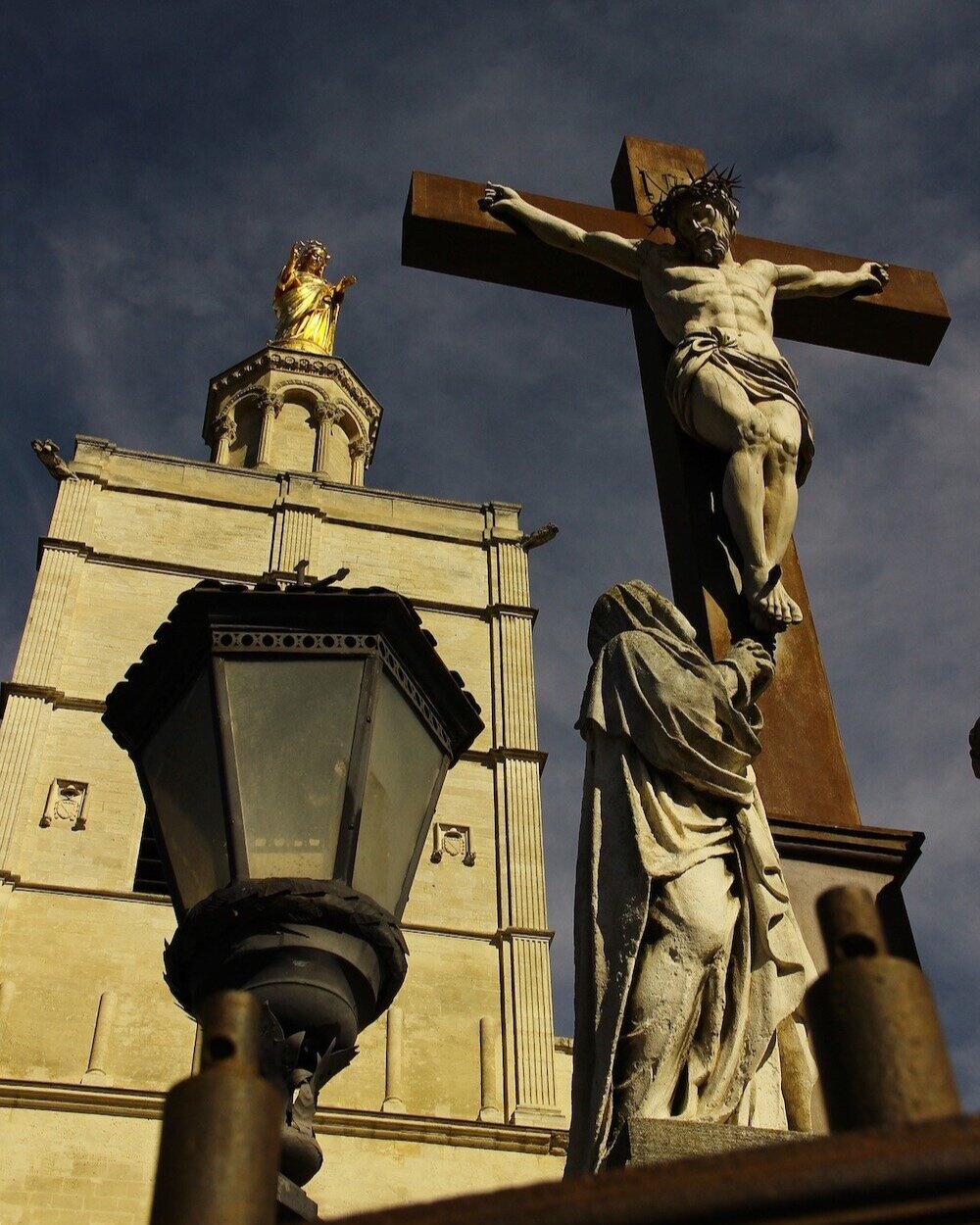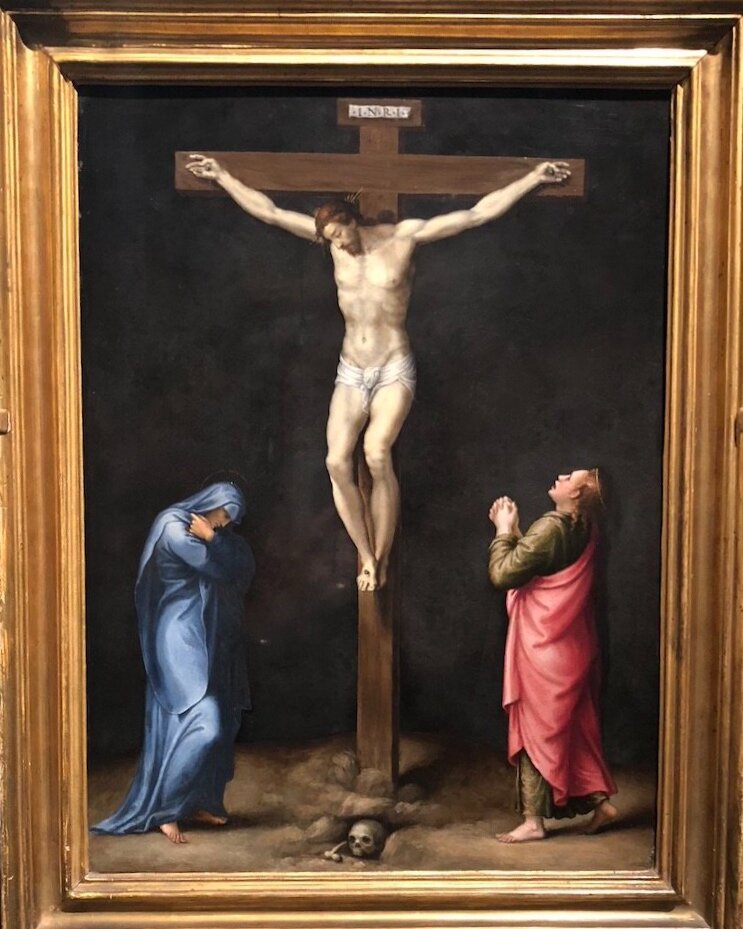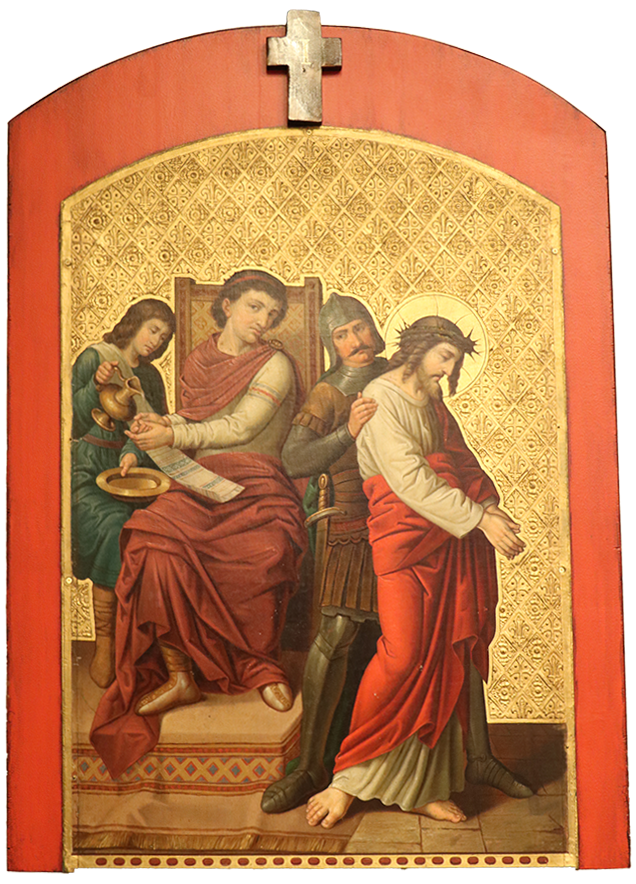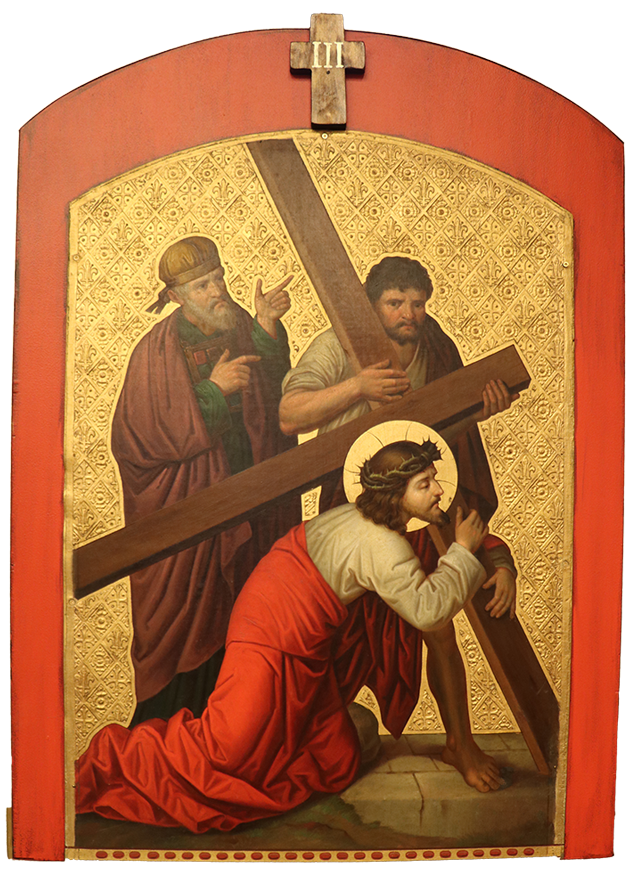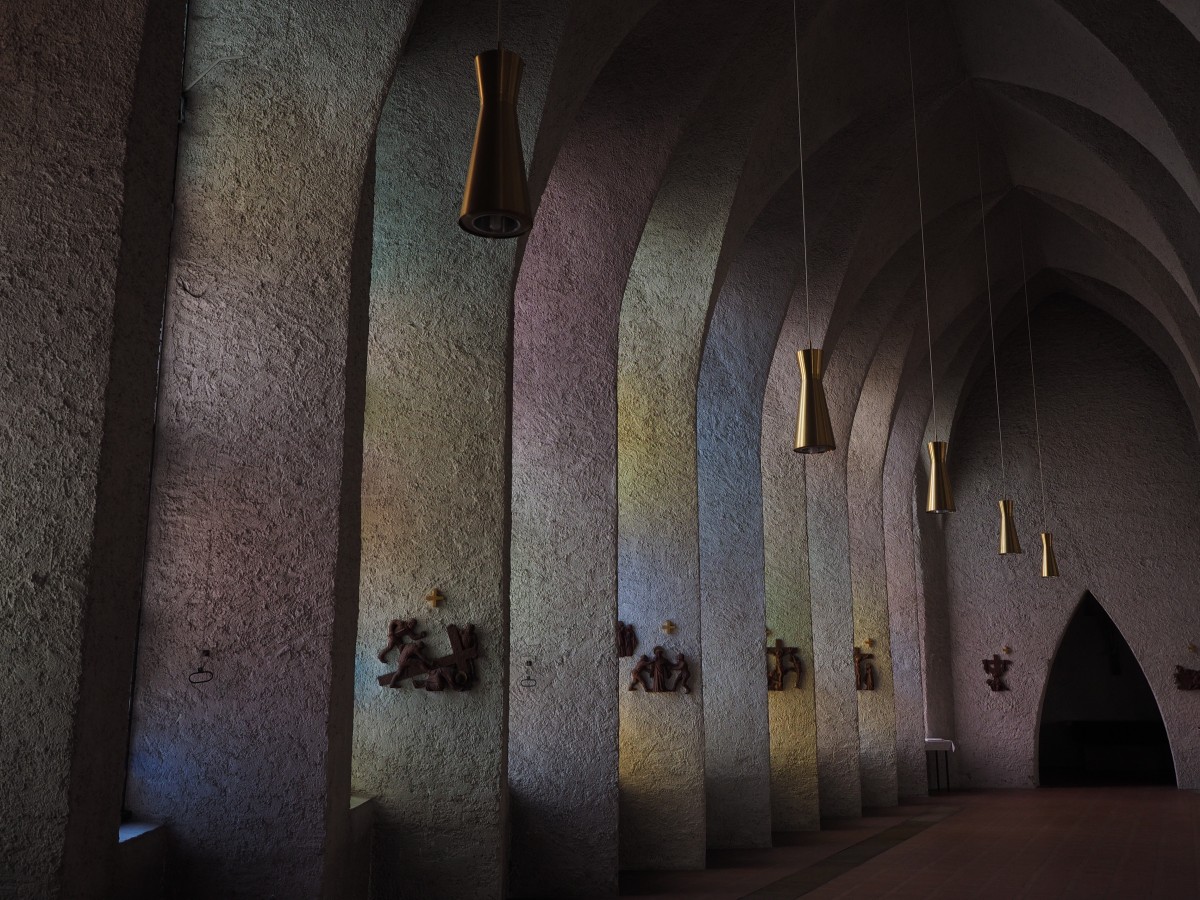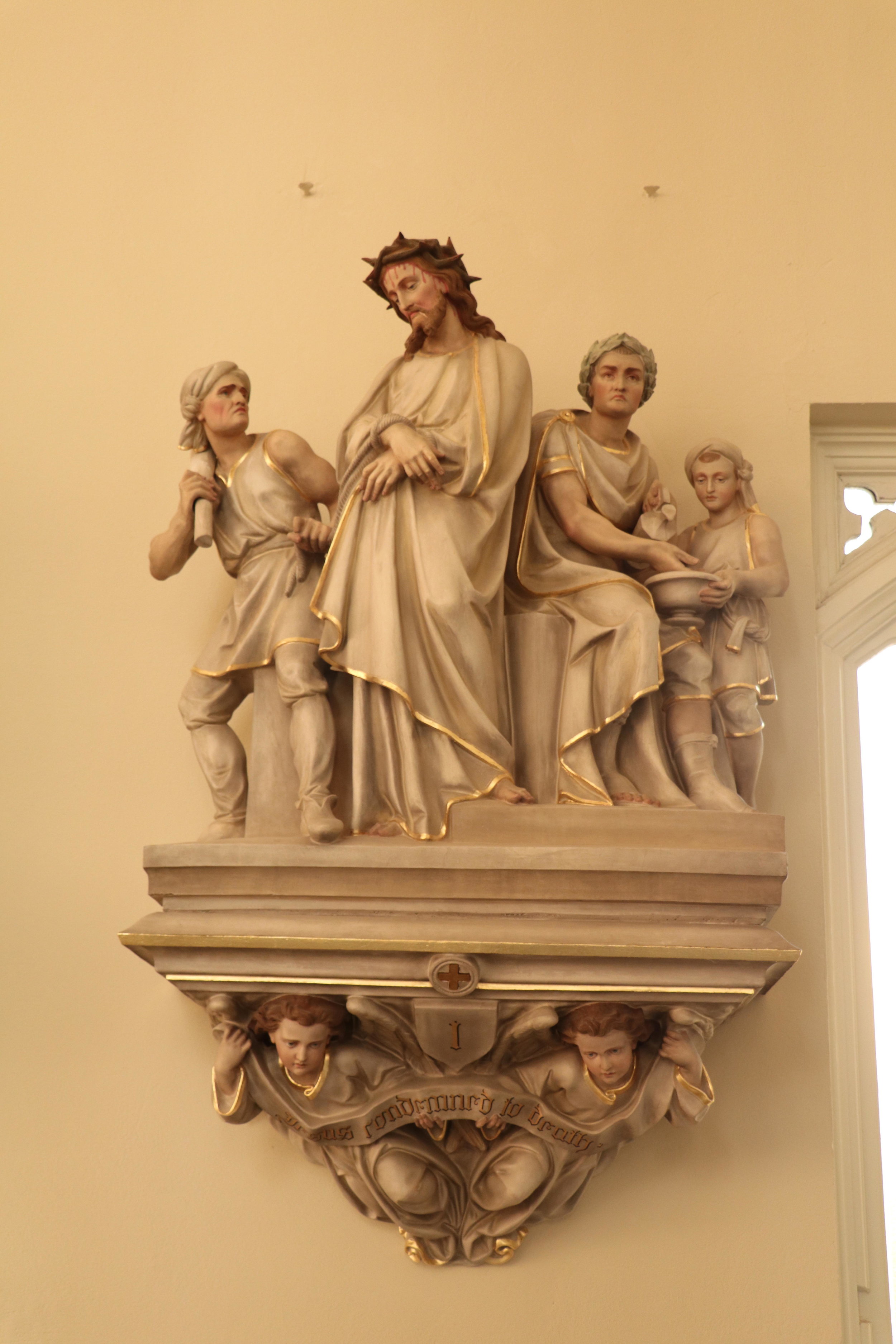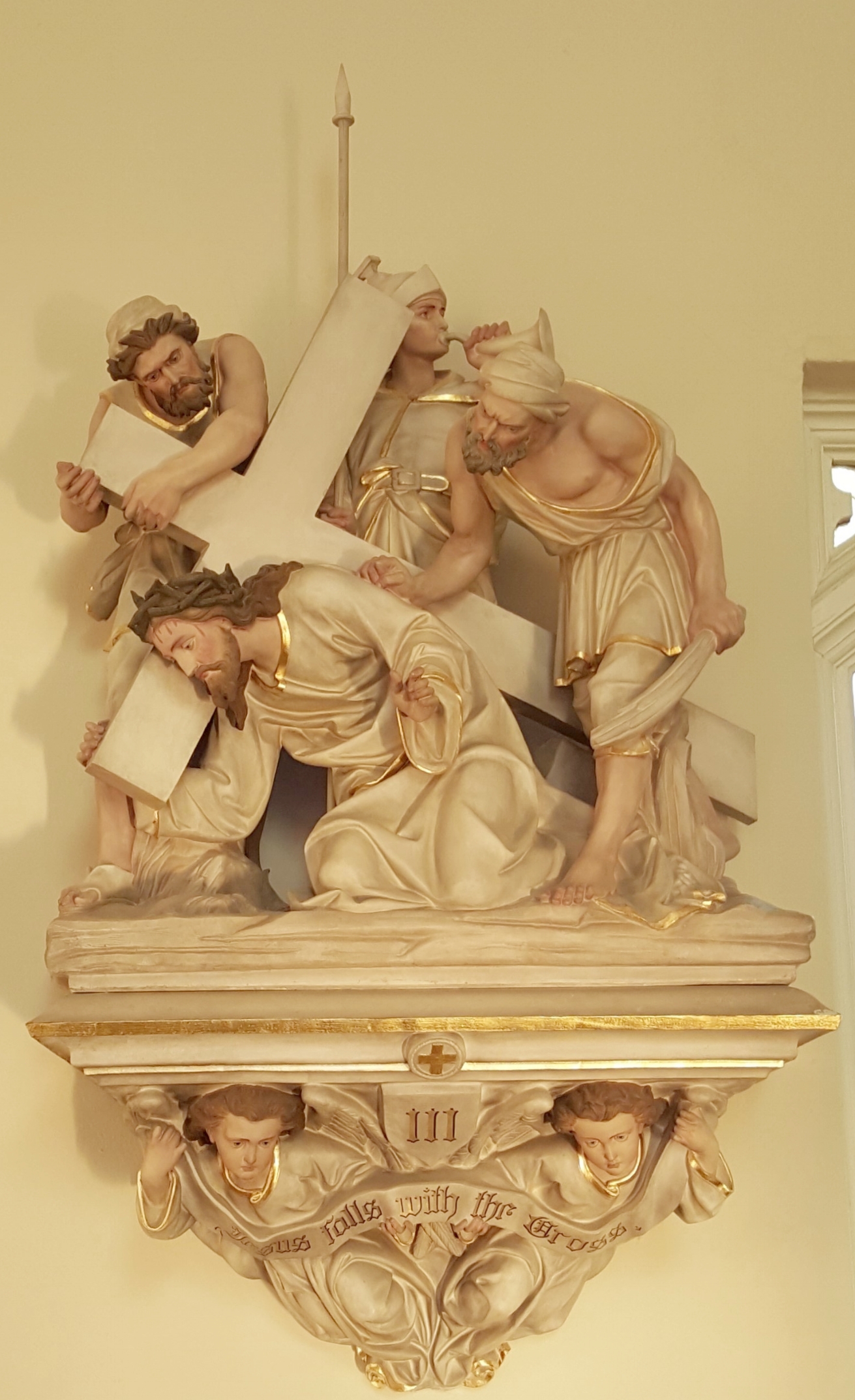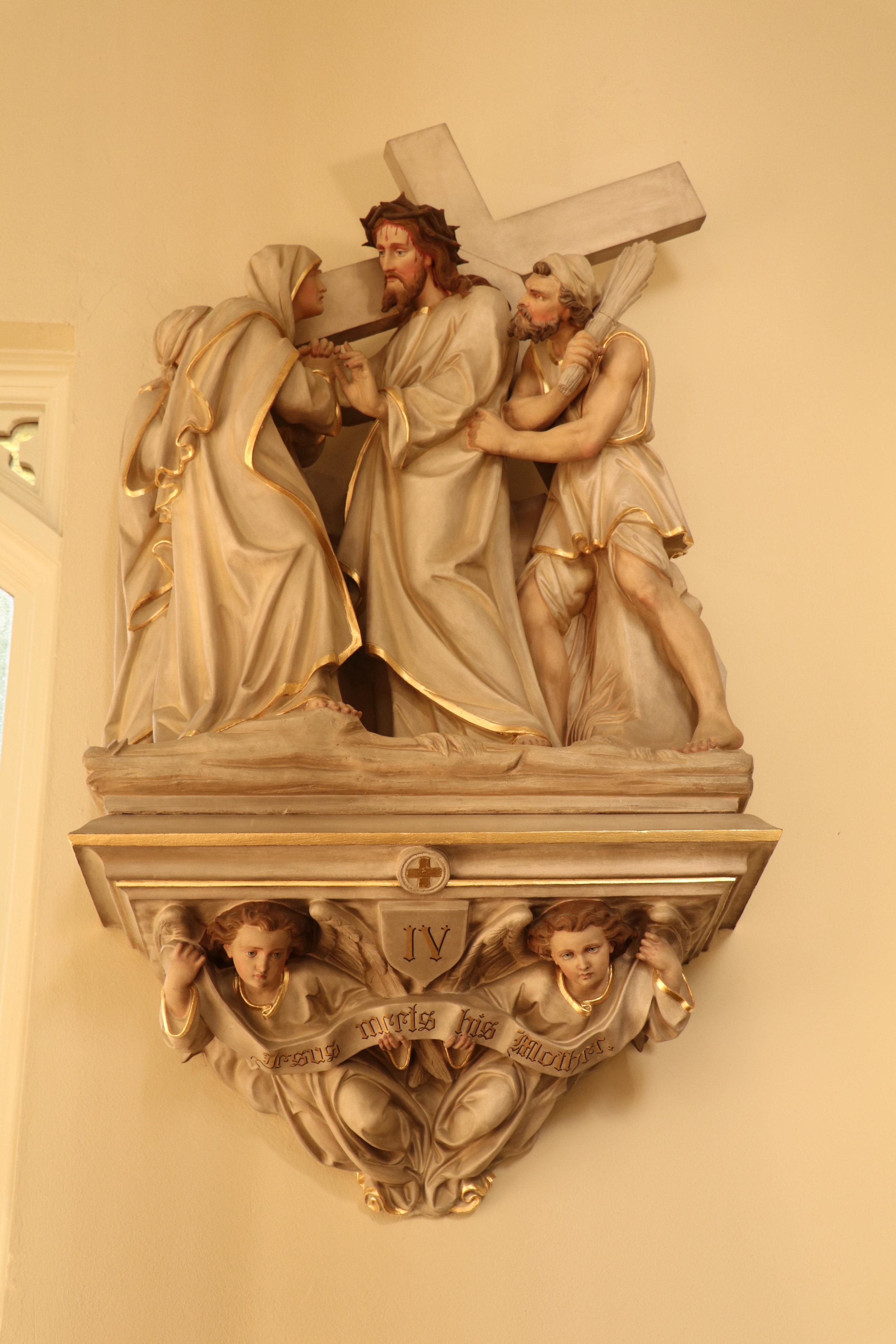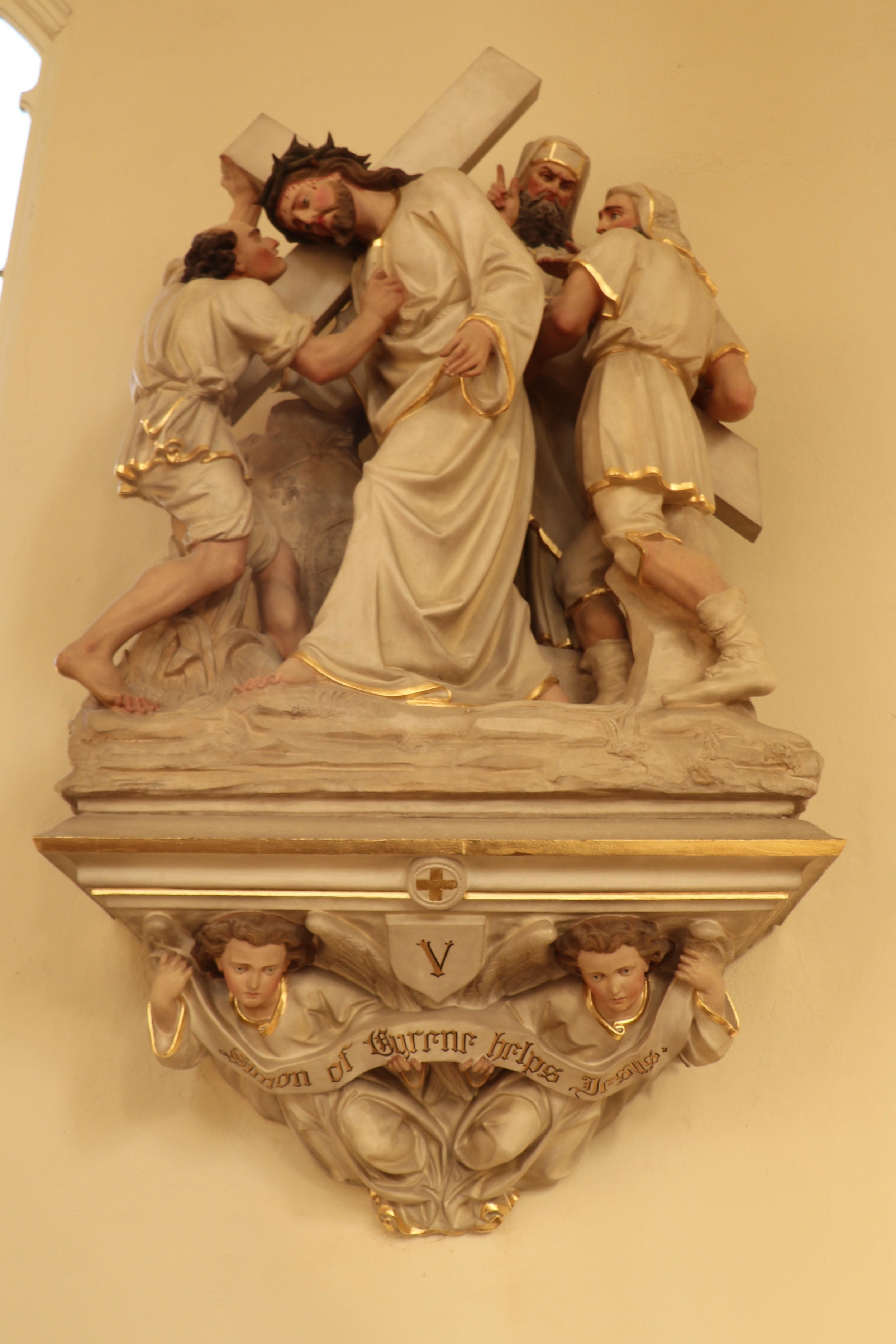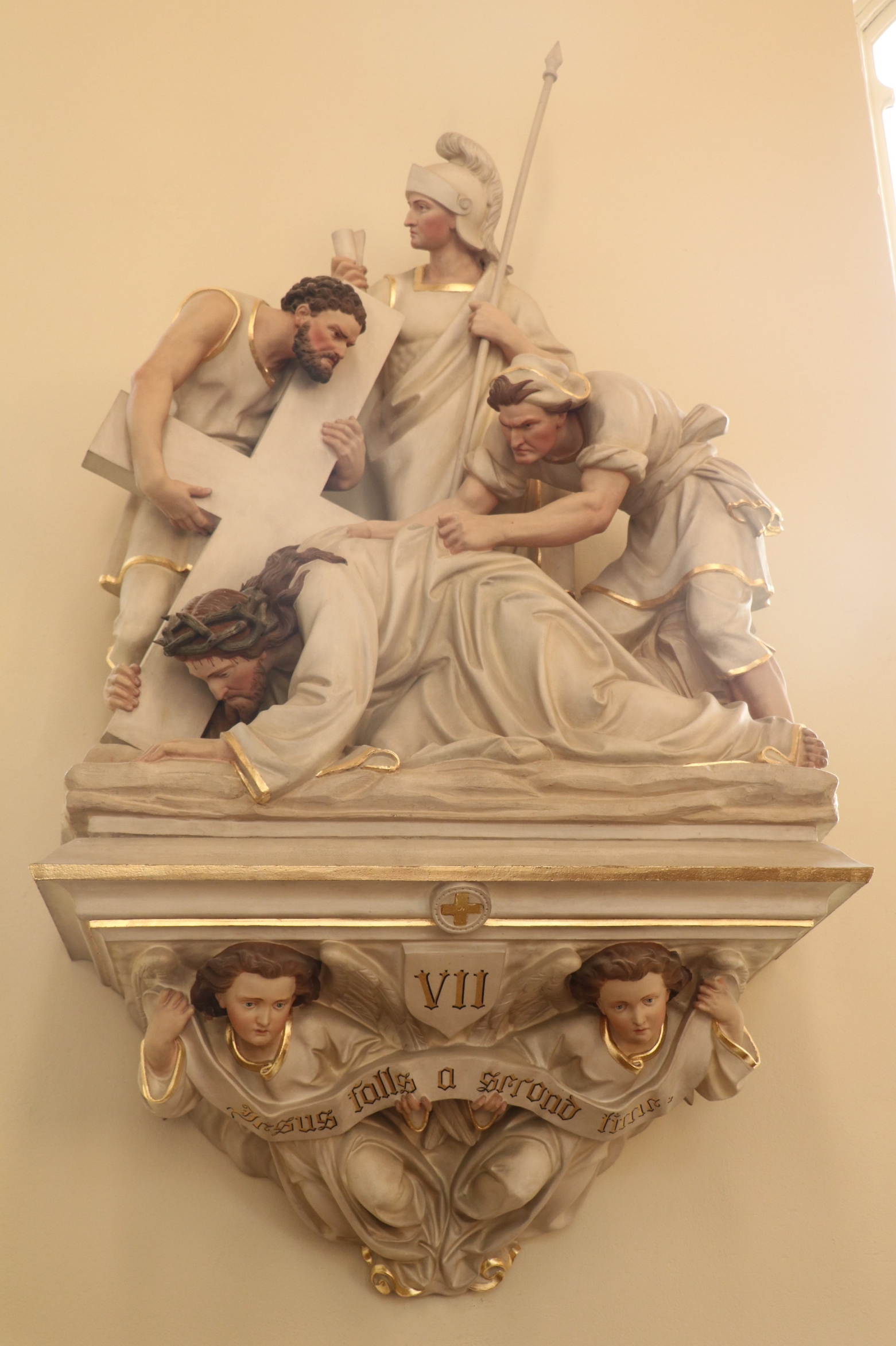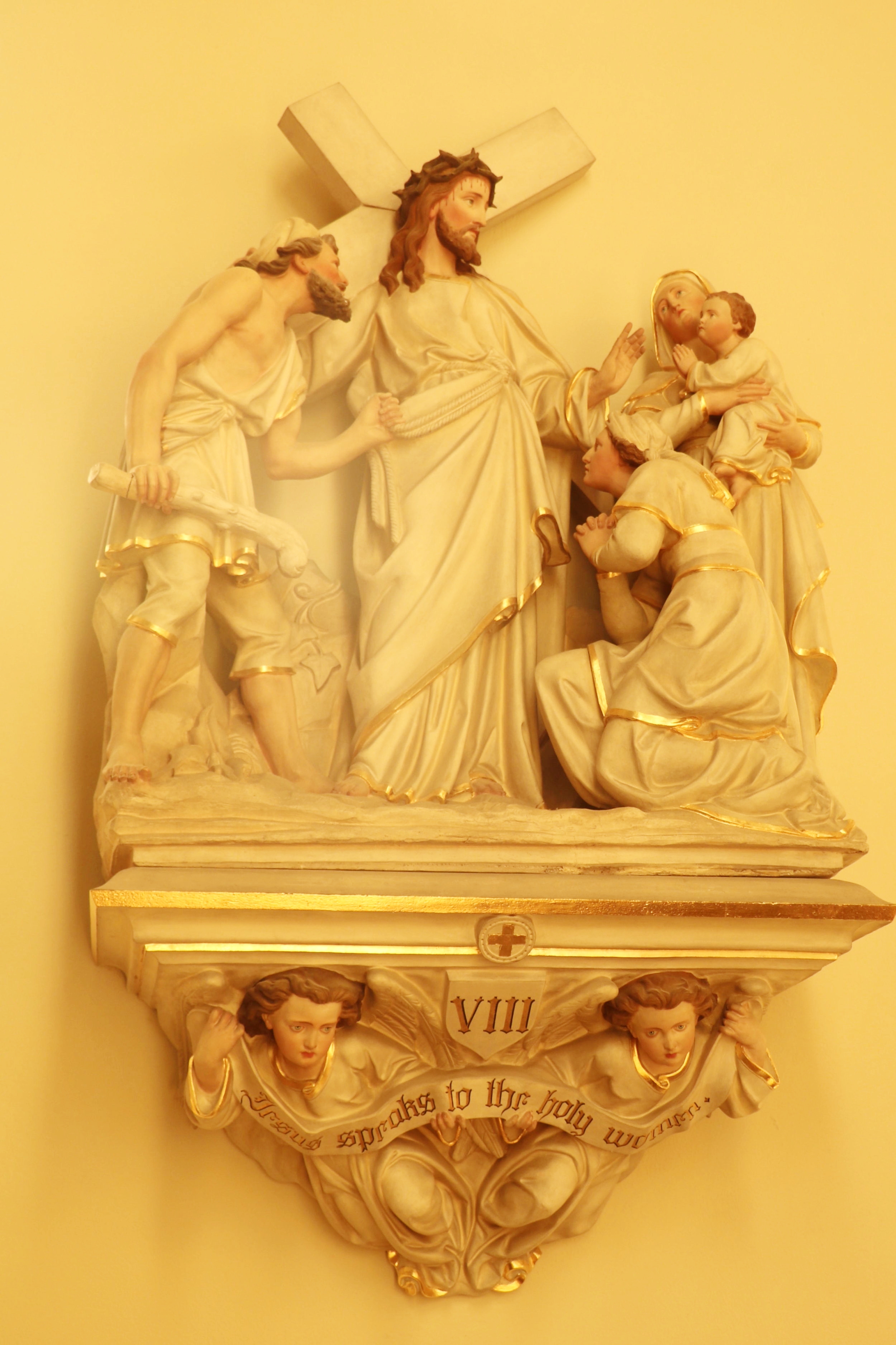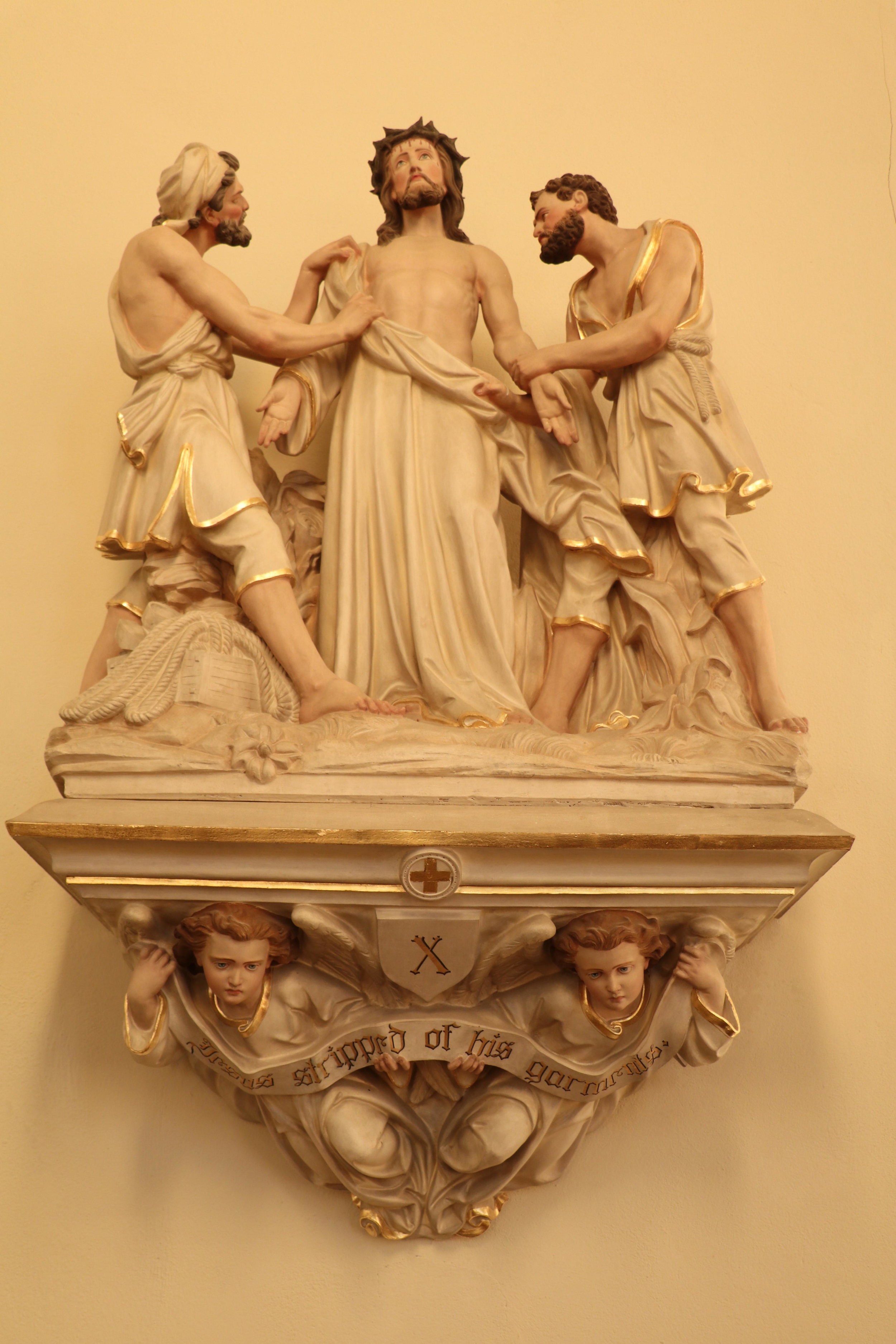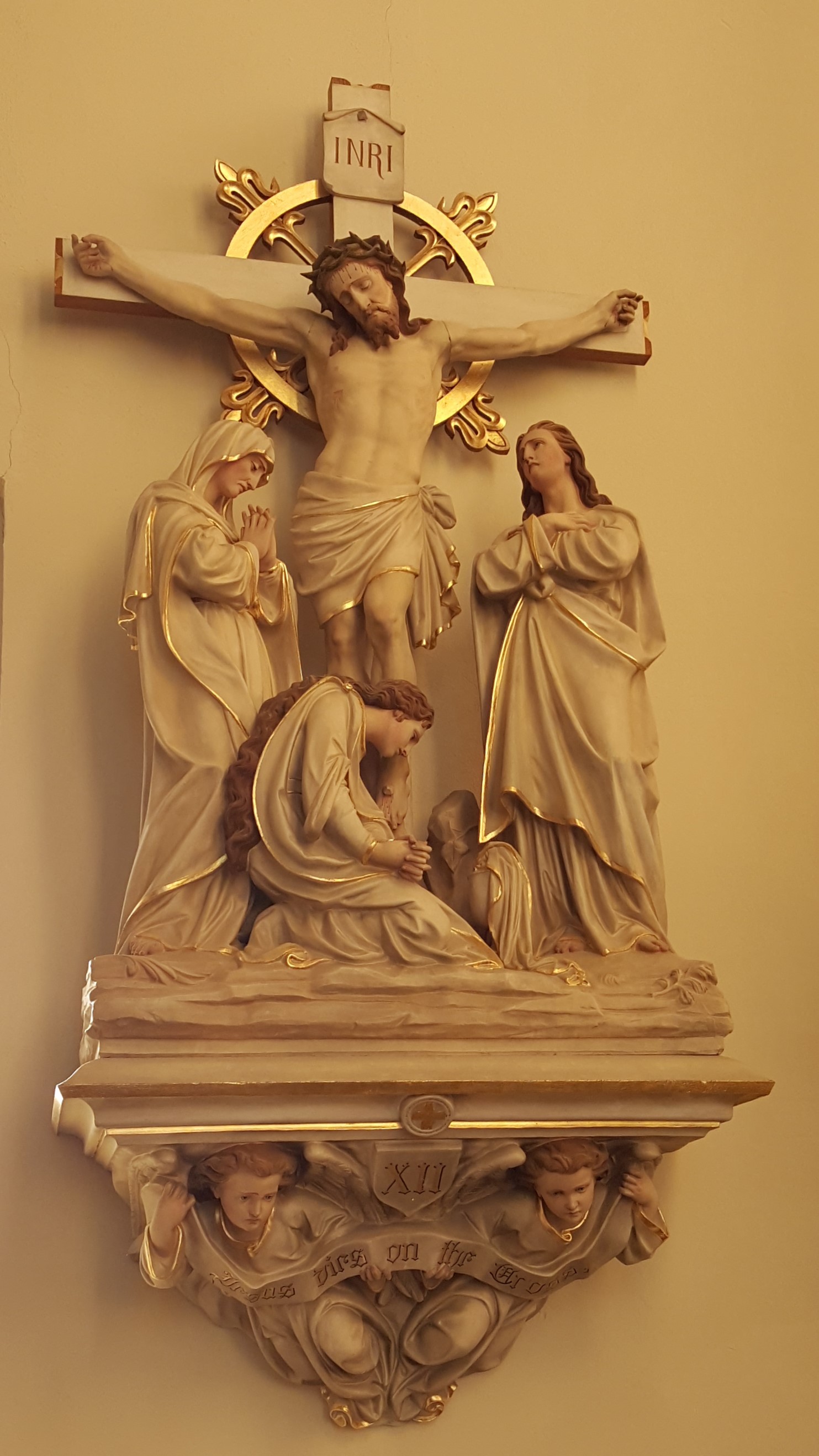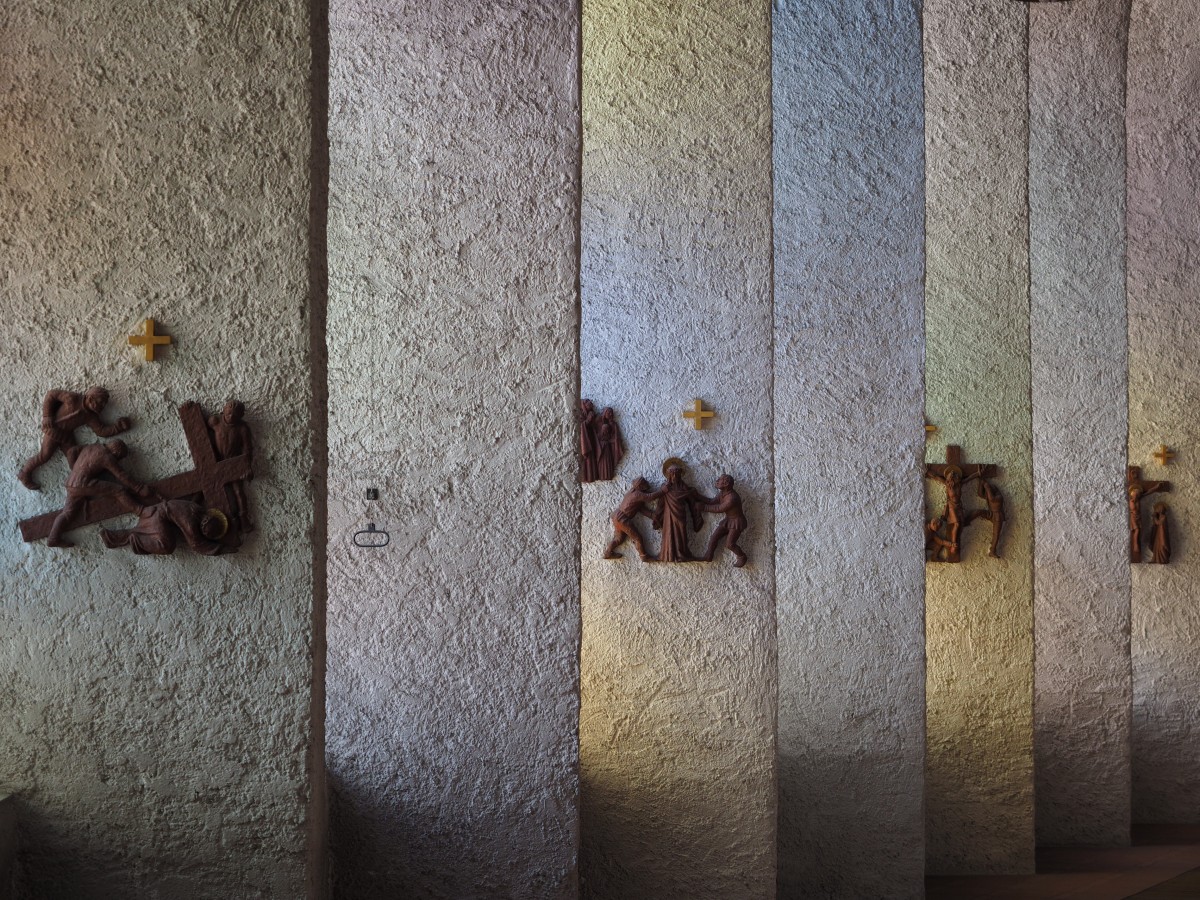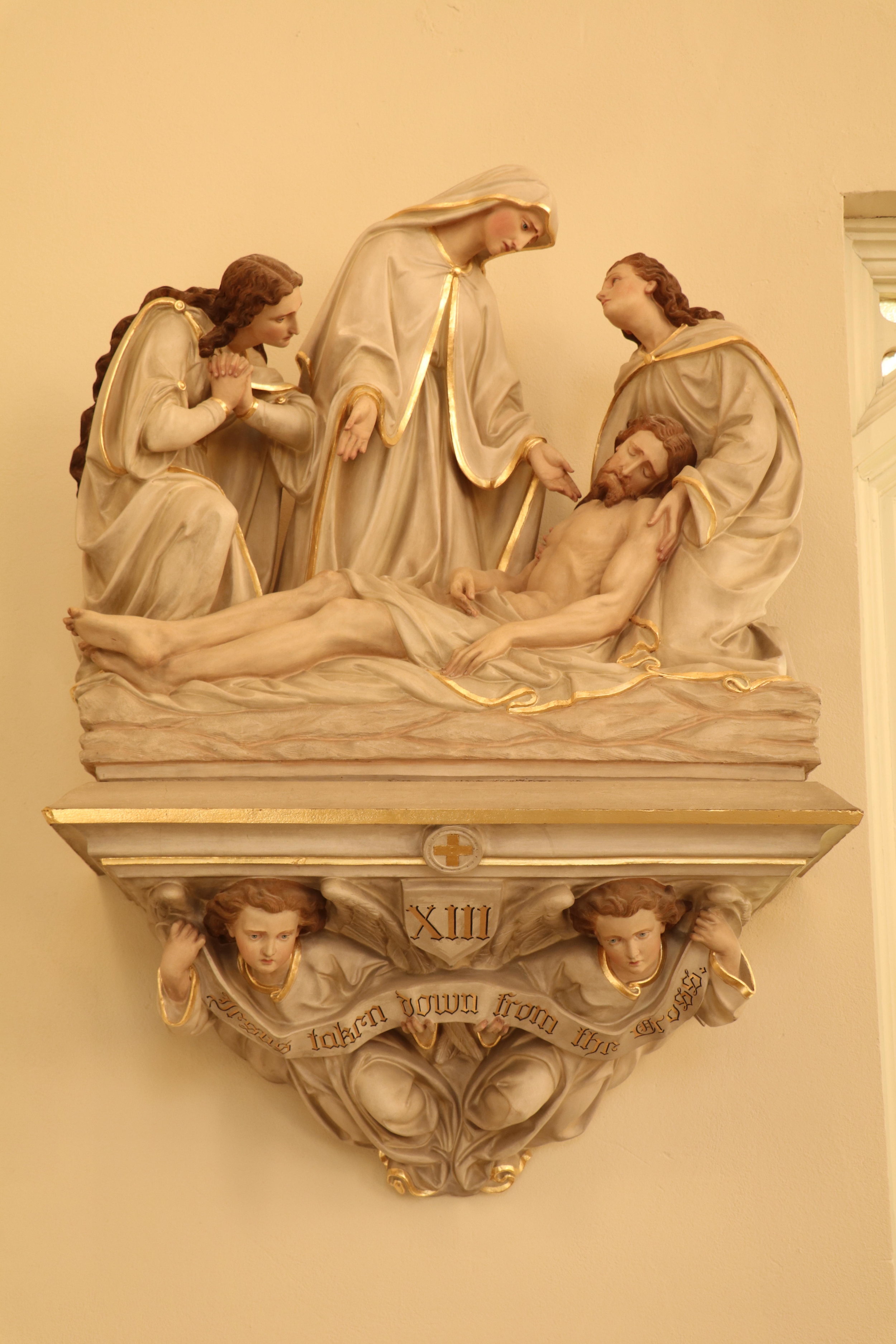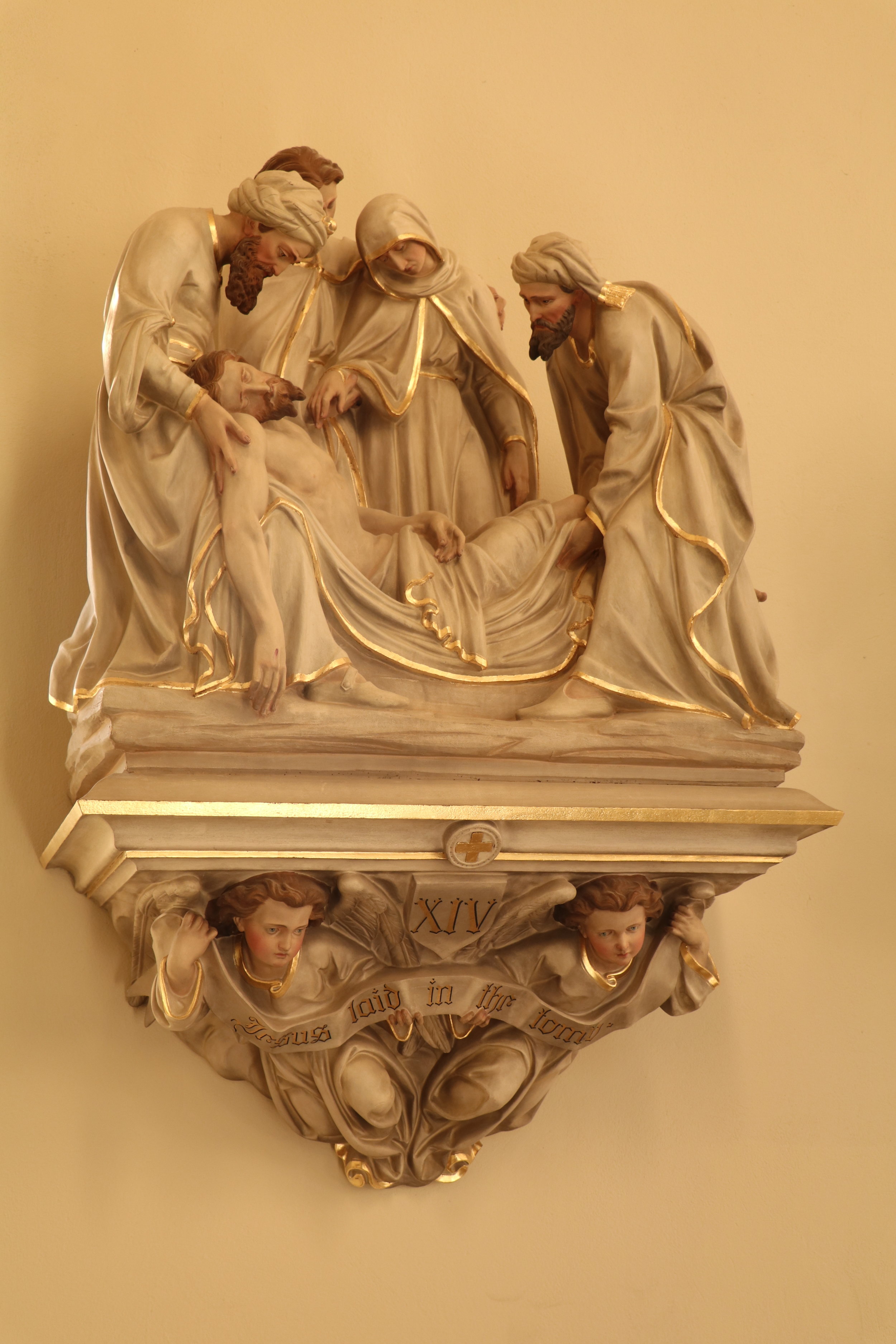Prayer Before the Crucifix
Most High, glorious God, enlighten the darkness of my heart and give me true faith, certain hope, and perfect charity, sense and knowledge, Lord, that I may carry out Your holy and true command.
Amen.
-- St. Francis of Assisi
The Symbolism of the Crucifix
Every Catholic Church has a crucifix on, above, or near the main altar. Many Catholics place crucifixes in their homes. Some of our non-Catholic brothers and sisters may object to the idea of a crucifix, wondering why, if Christ died once and for all, do Catholics leave Jesus up on the Cross? Doesn't that take away from the power of the Resurrection? As Fr. David Dohogne explains, "Catholics also believe that our Lord is risen, but we also need to be reminded of what Christ had to endure before the Resurrection could take place, namely his Passion and Death on the cross. The crucifix helps us better understand and appreciate our "theology of redemption." It is a constant reminder of Christ's love for us.”
As St. Paul tells us in his letter to the Galatians, through the act of being crucified, Jesus did not die for nothing but died to save us:
"For through the law I died to the law, so that I might live to God. I have been crucified with Christ; and it is no longer I who live, but it is Christ who lives in me. And the life I now live in the flesh I live by faith in the Son of God, who loved me and gave himself for me. I do not nullify the grace of God; for if justification comes through the law, then Christ died for nothing." [Gal 2:19-21, NRSVCE]
The symbol of the crucifix within our homes and around our necks helps us to remember everyday this ultimate act of love and the importance of redemptive suffering.
... he learned obedience through what he suffered; [Hebrews 5:8]
Praying with the Stations of the Cross
Praying “The Stations of the Cross” is an important Catholic devotion that centers around the Crucifixion by re-enacting the Passion of Jesus on Good Friday. During the Stations, we walk with Jesus on his journey starting with his condemnation to death by Pilate, continuing on the Via Dolorosa or Sorrowful Way to Mt. Calvary, and ending with the laying of Jesus in the tomb. We are able to meditate on the complete suffering of our Lord during his darkest hours on Earth. Experiencing his passion through the prayers of the Stations of the Cross allows us to appreciate the love Jesus has for all of us. It is also puts into perspective our daily suffering in contrast to the Lord’s suffering. We are encouraged to offer our suffering to the Lord in union with his suffering on the cross in atonement for our sins and the sins of others.
In early Christianity, re-tracing the path of Christ’s suffering on the Via Dolorosa was passed down as an important tradition. But it was not until after Constantine legalized Christianity in the year 312 AD, that the Sorrowful Way was marked with its important stations for visiting pilgrims. Later, as it became more difficult to go to the Holy Land due to the Muslim oppression, chapels depicting the sacred events were built first in Italy and then throughout Europe. At the end of the 17th century, the Stations of Cross became formalized as the 14 stations and prayers that exist today. Churches began to install the Stations of the Cross, so that all parishioners could participate in the experience as a mini-pilgrimage.
The 14 events that make up the stations are shown below. They are displayed as plaques or sculptures and placed in sequence throughout the church so that the parishioners can view them during the prayer service. The Stations of the Cross are traditionally prayed either as a parish or individually on the Fridays of the Lenten season, especially on Good Friday. And with the help of technology, those who cannot leave their homes are able to view the Stations on television and the Internet.
For a complete text of the Stations of the Cross, please follow this link to EWTN:
There are also several videos of the Stations available on the Internet as well, like this one developed by Catholic.org:



